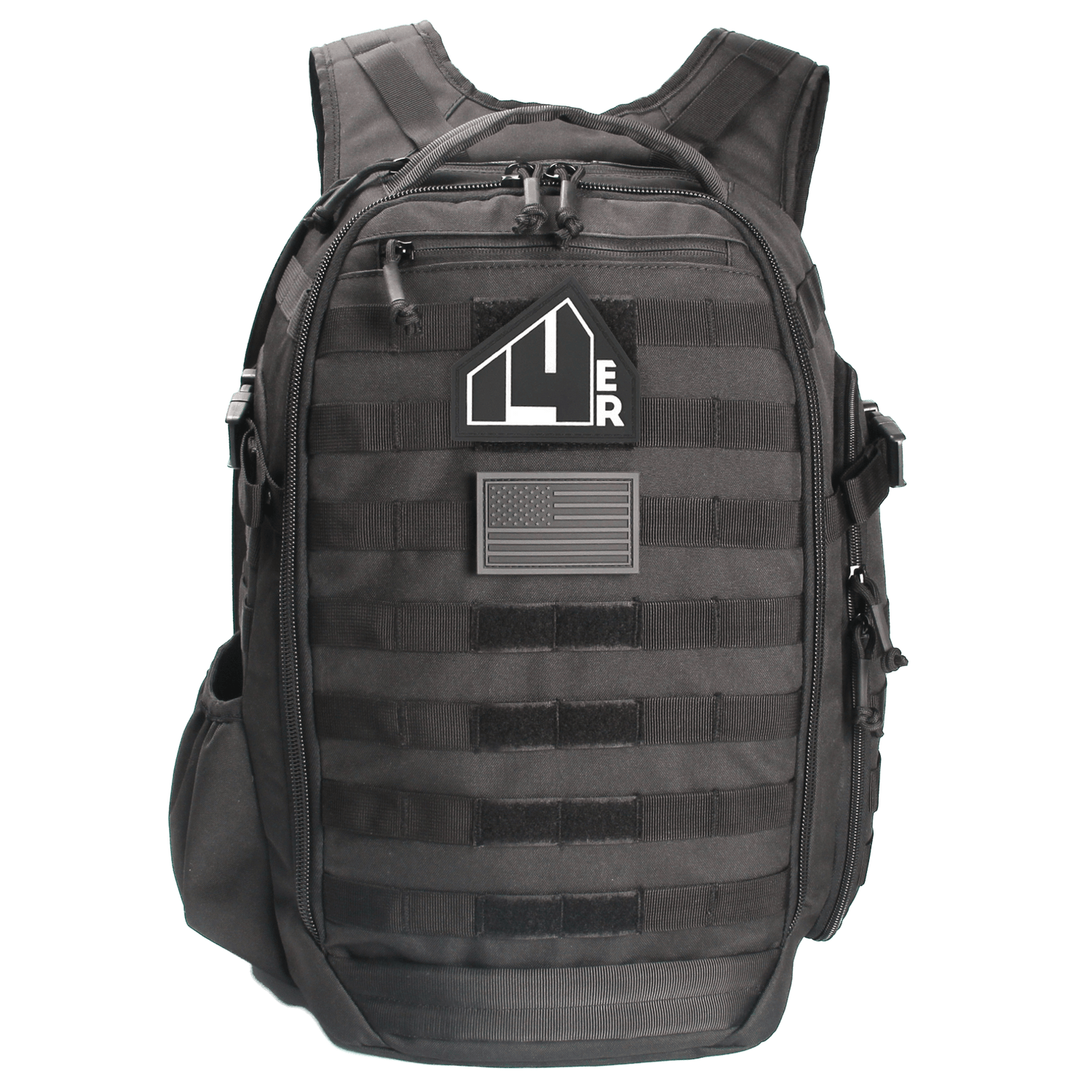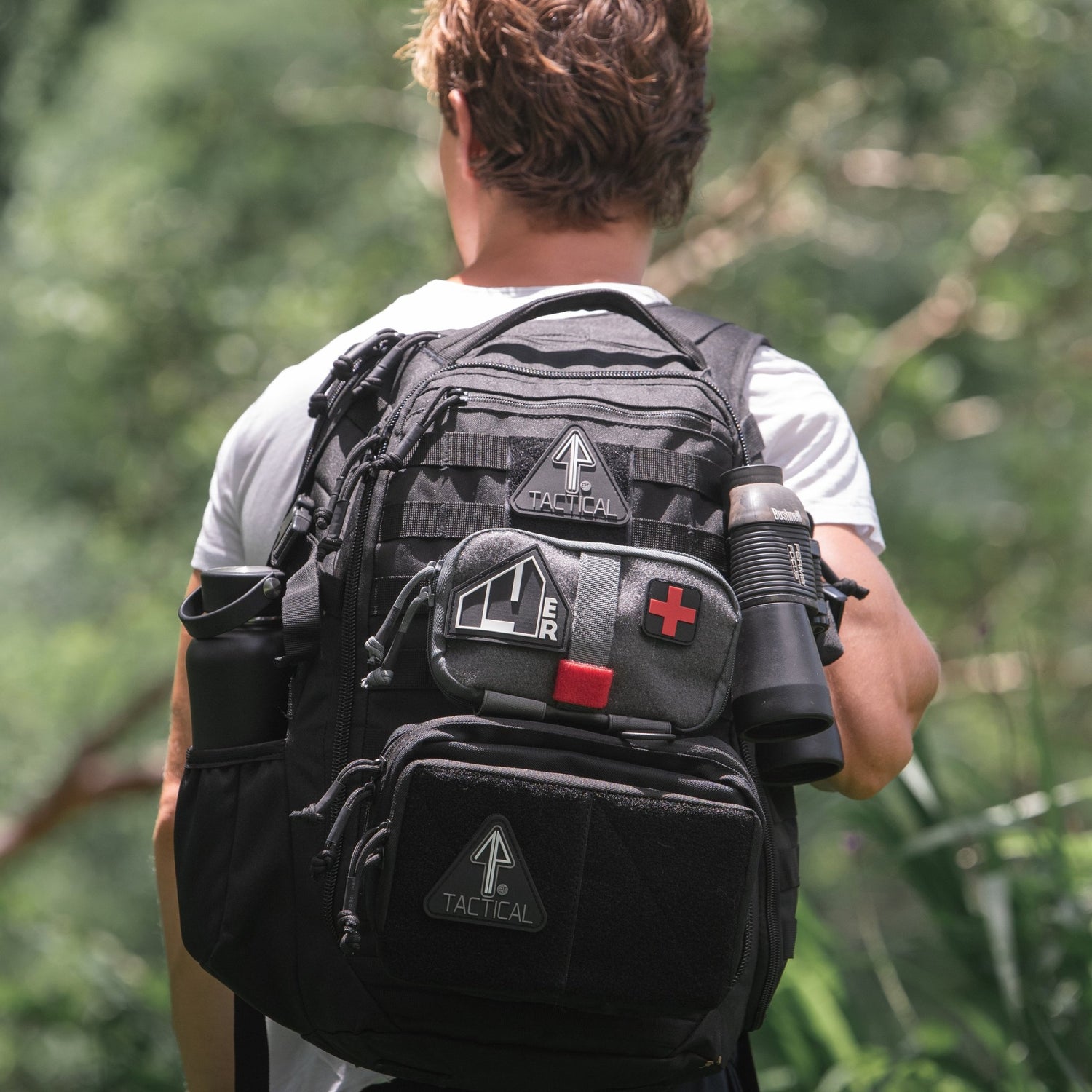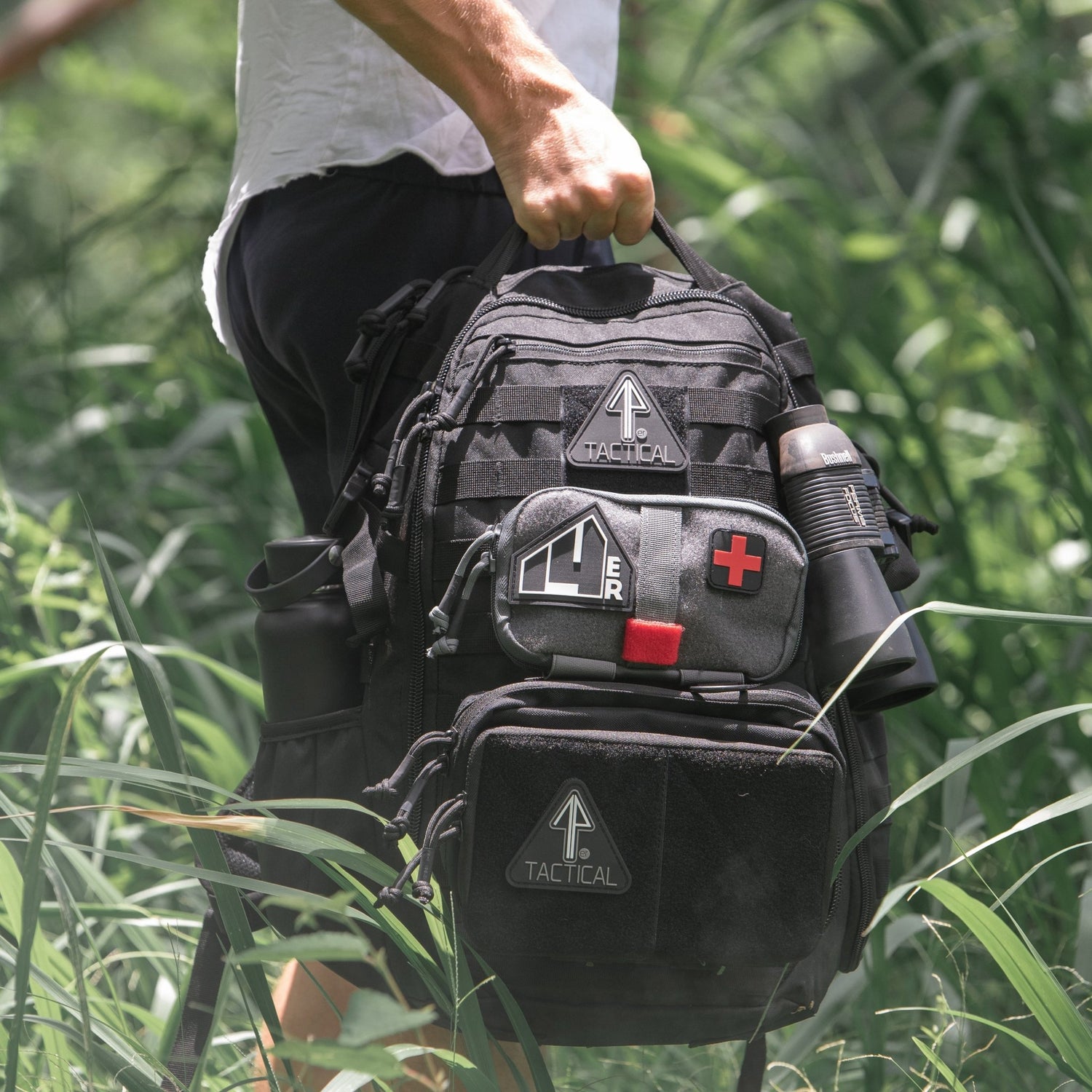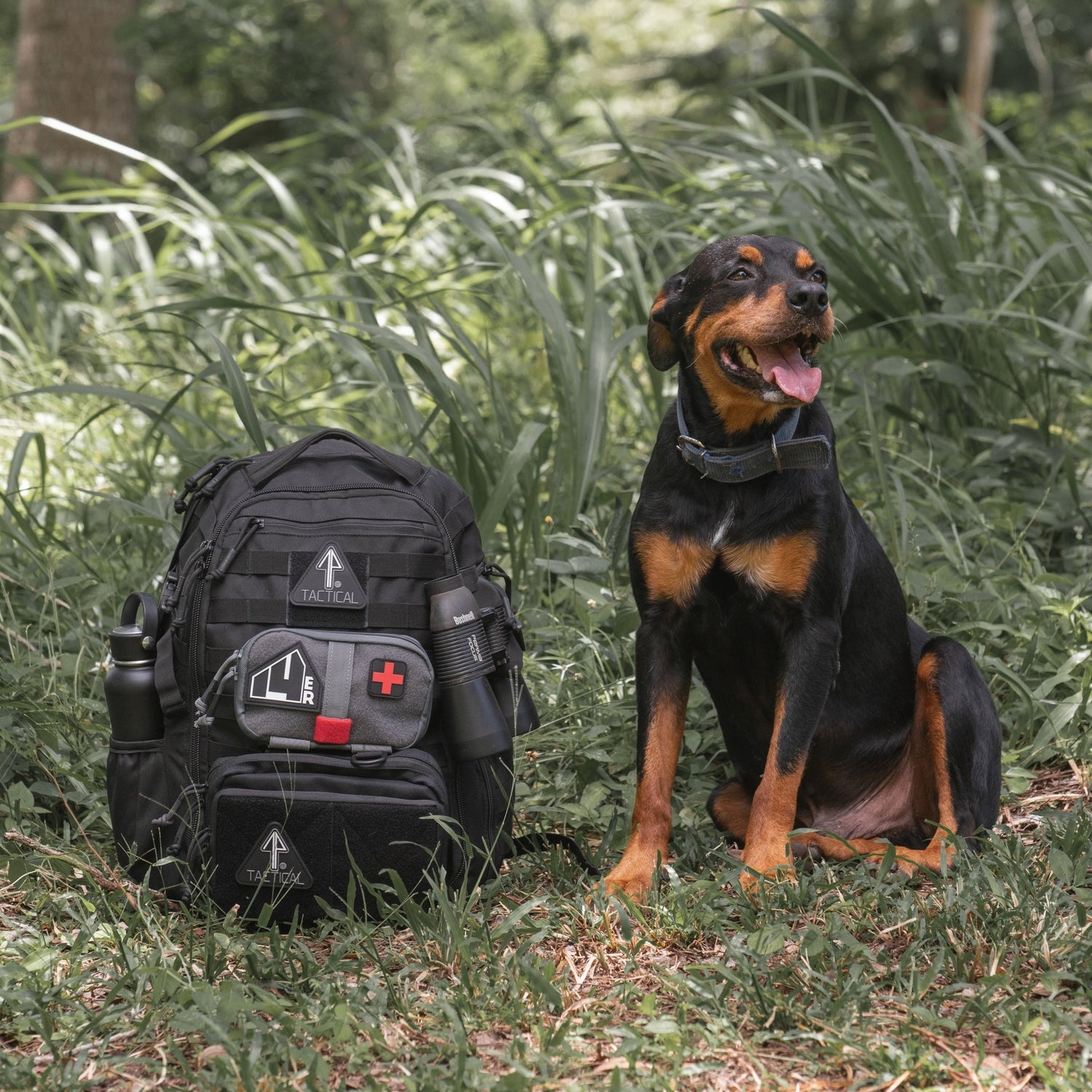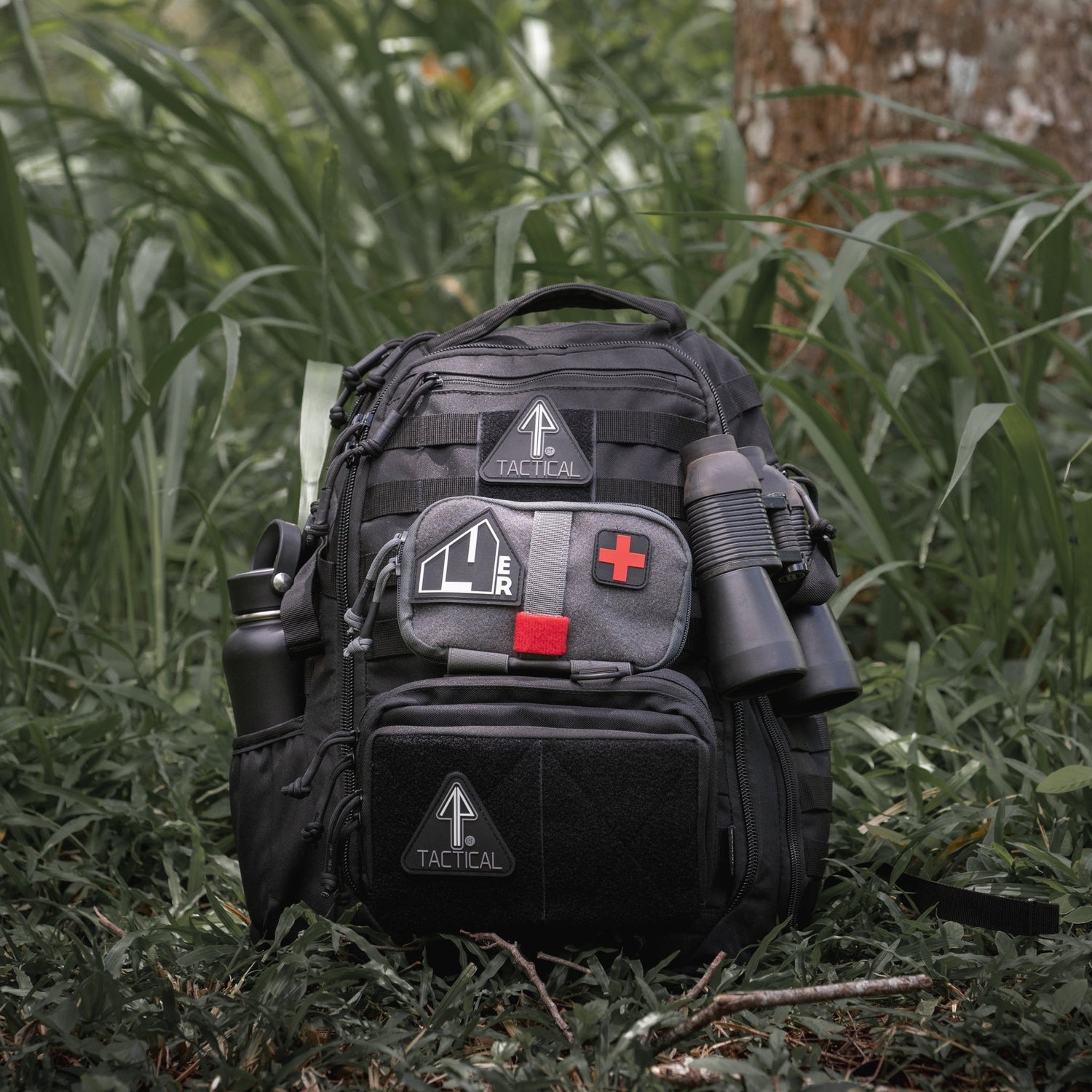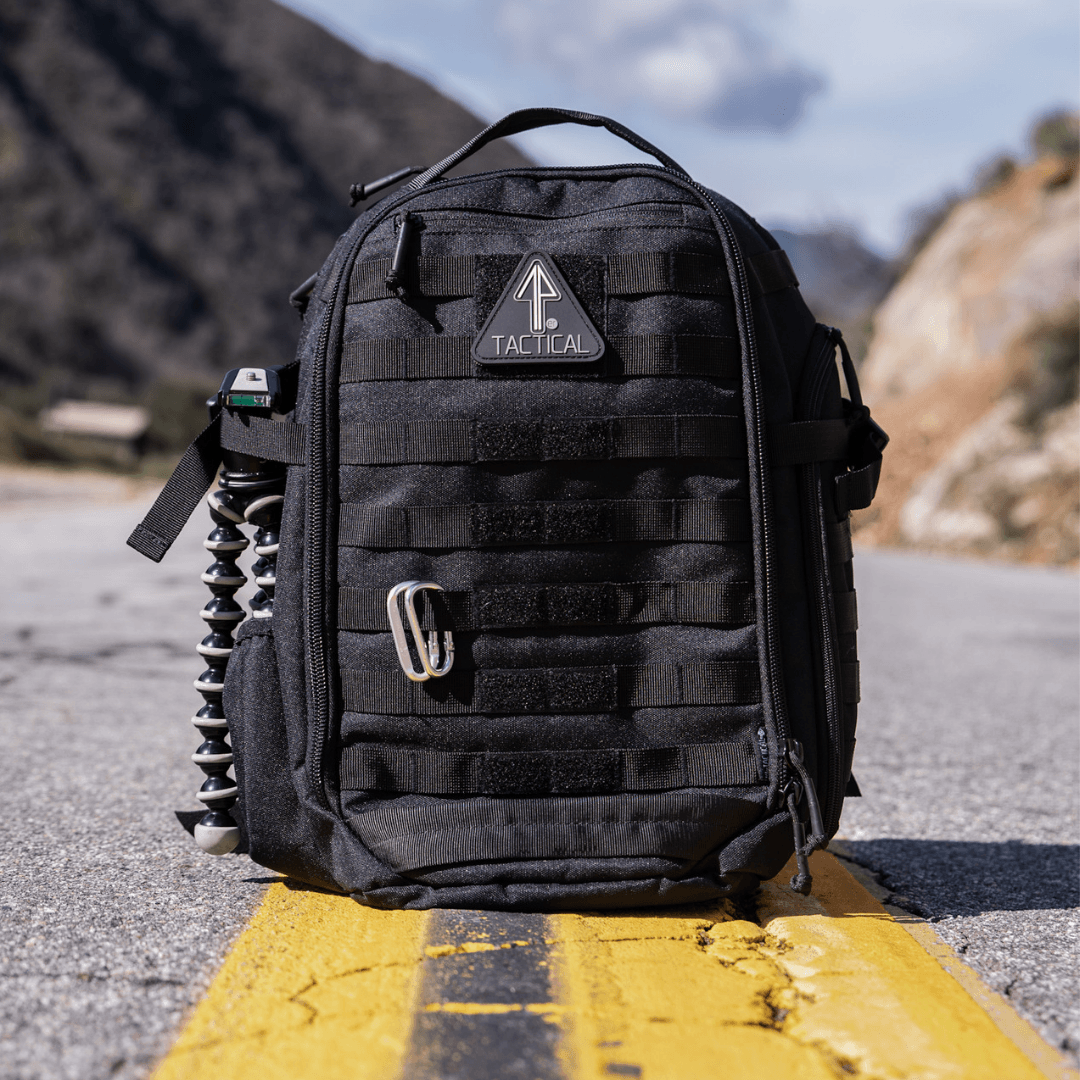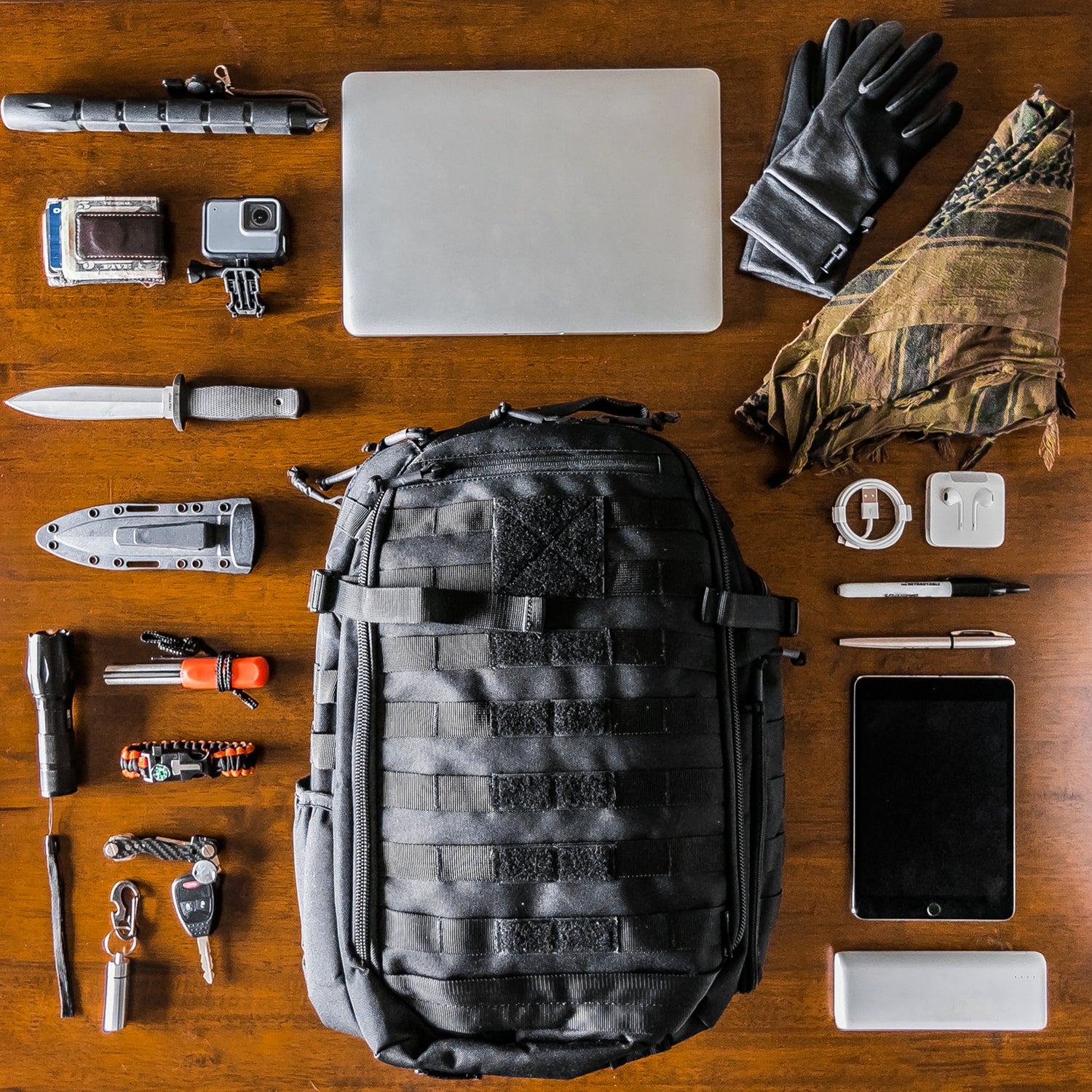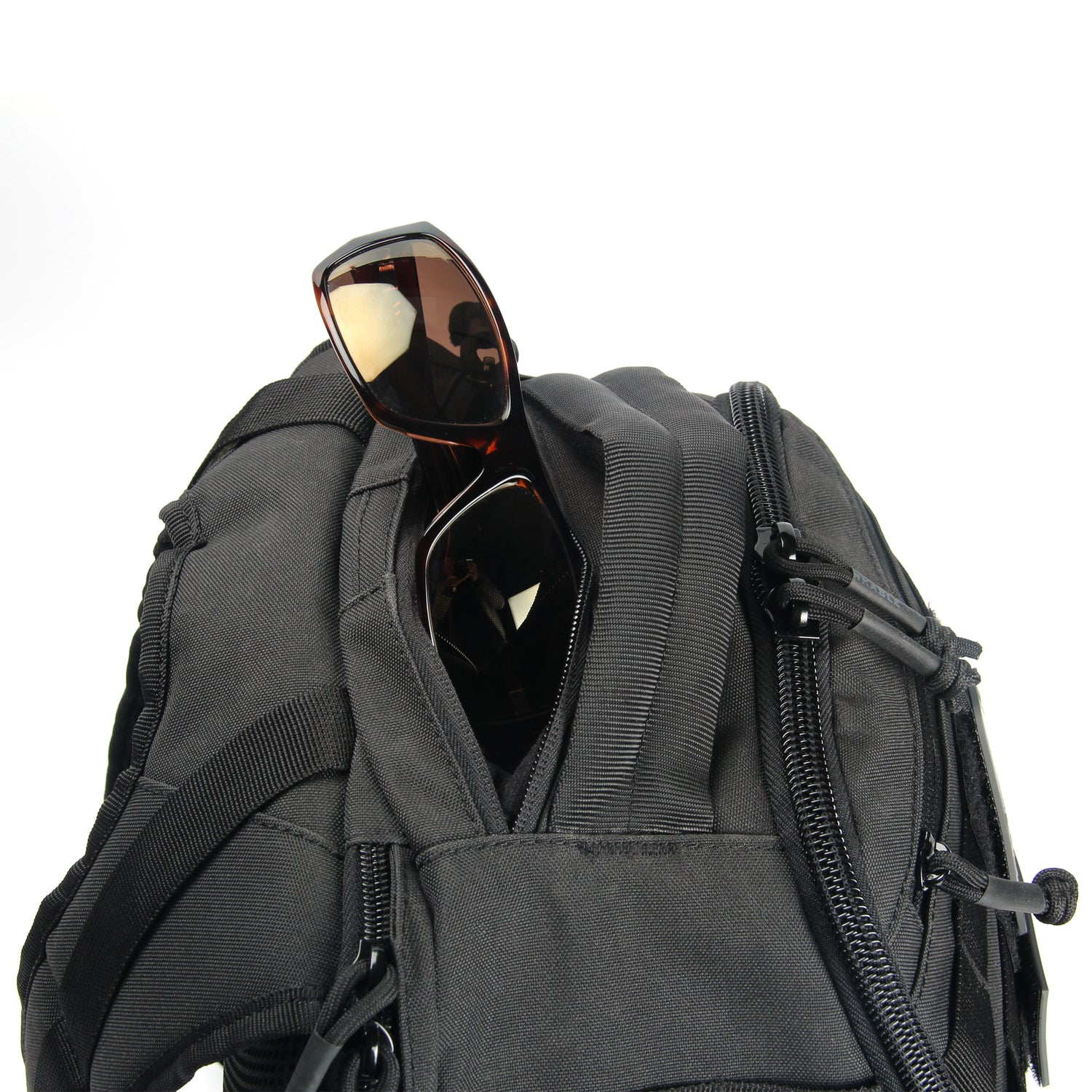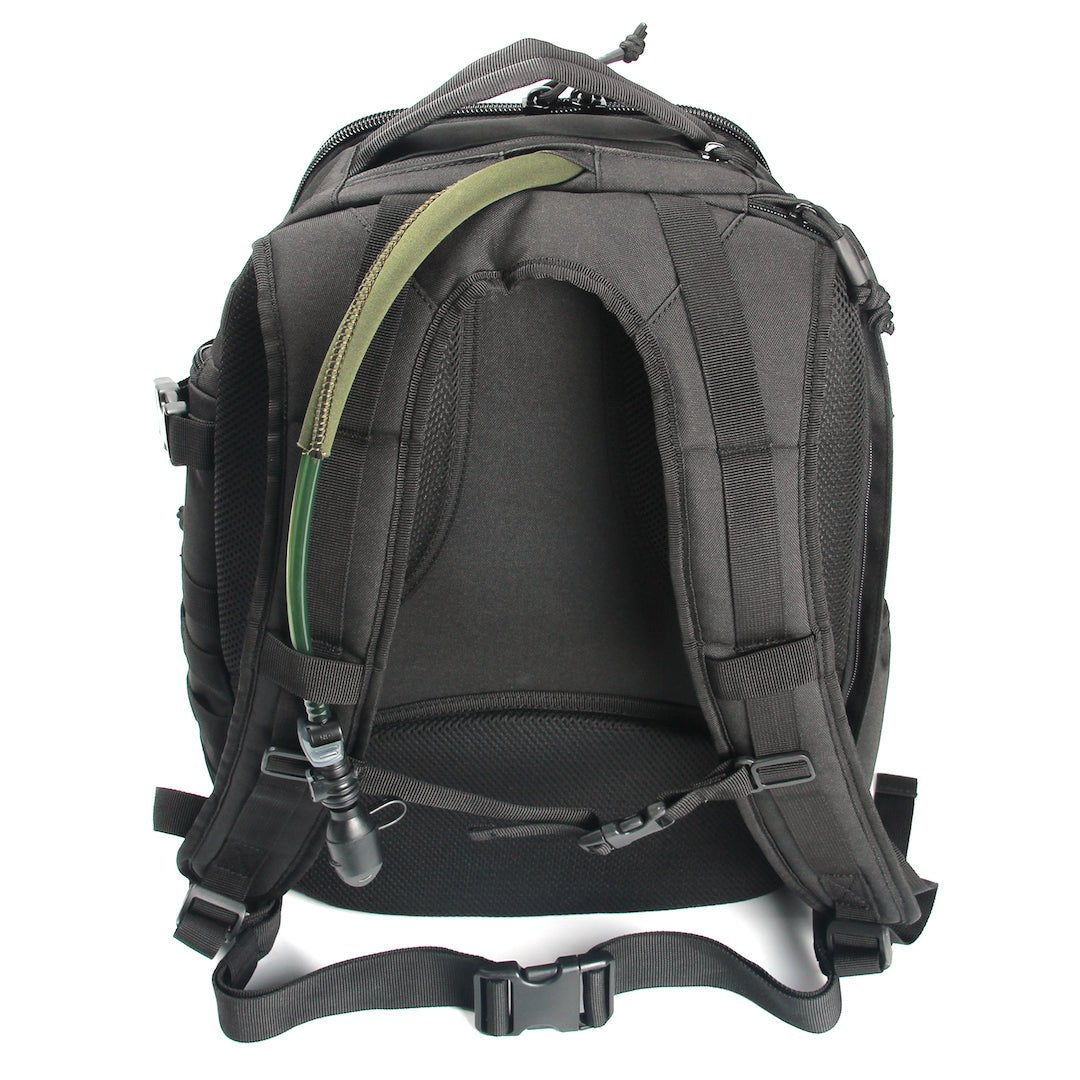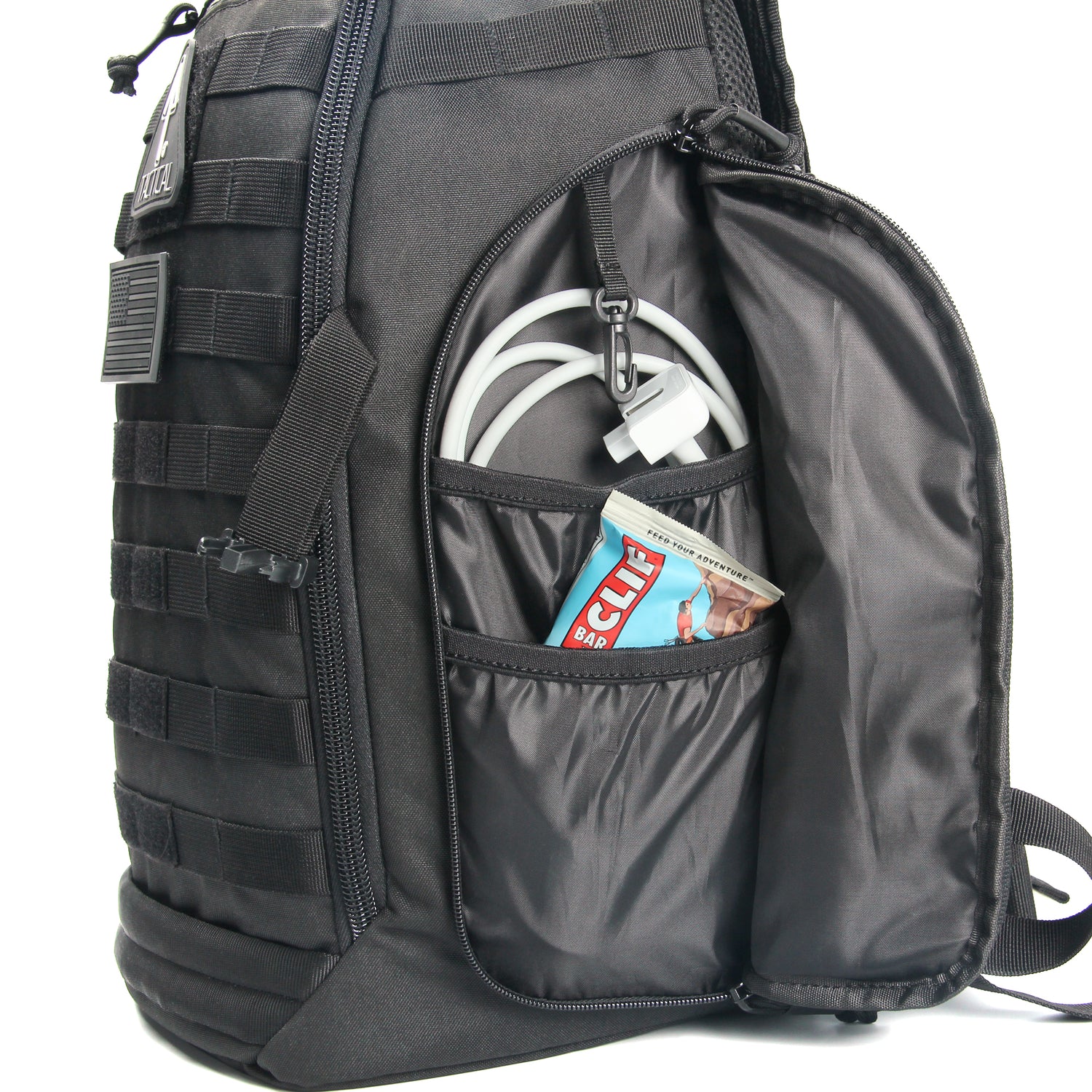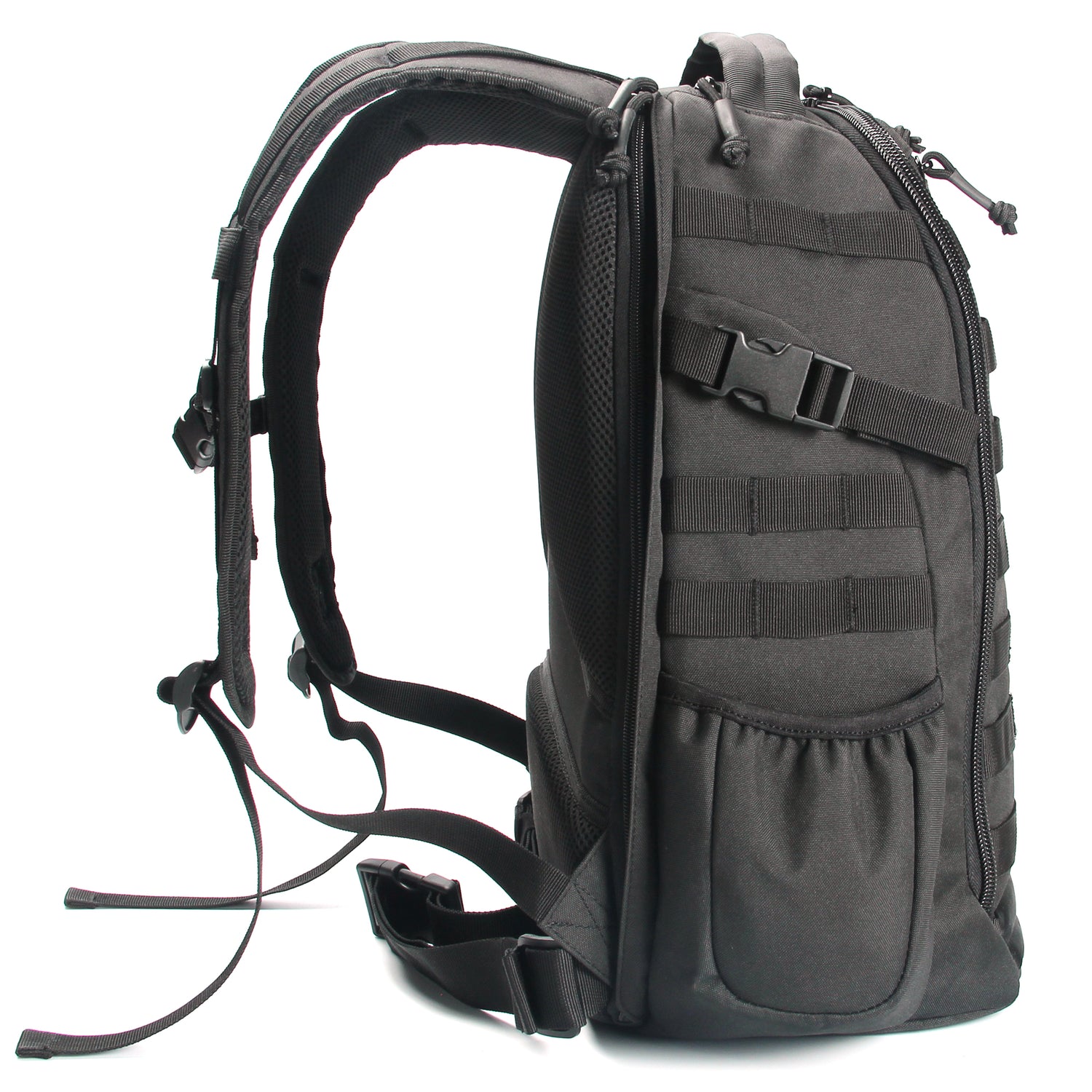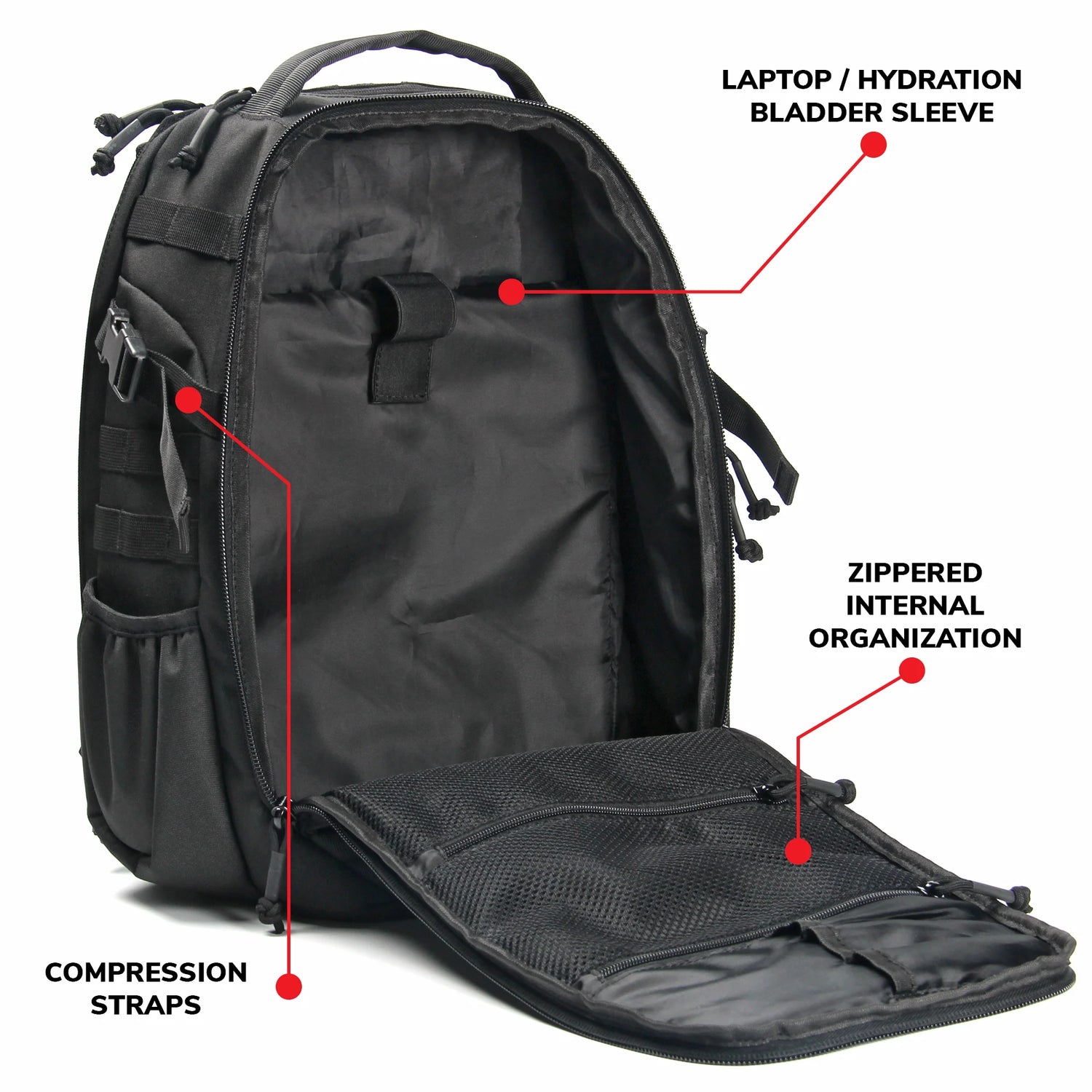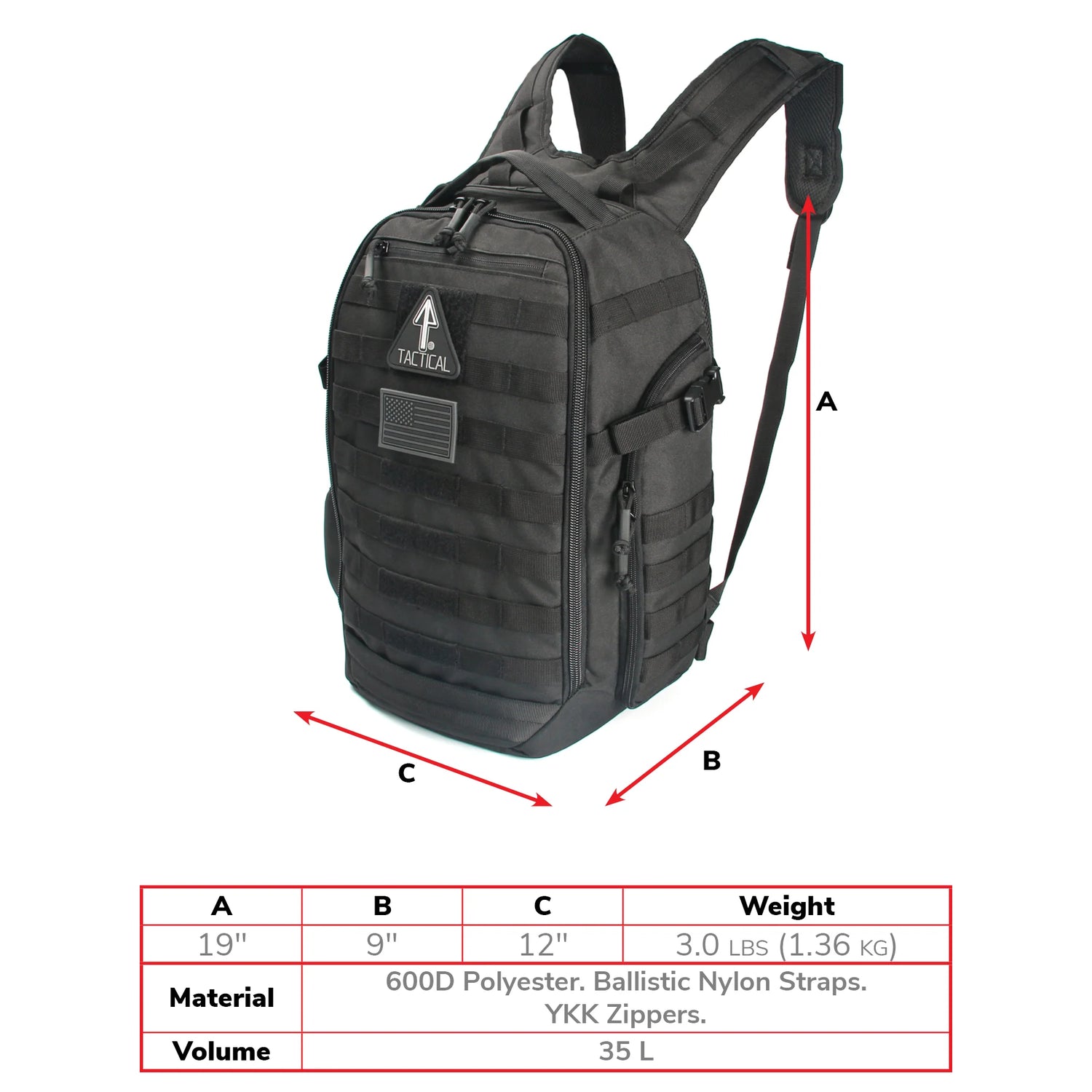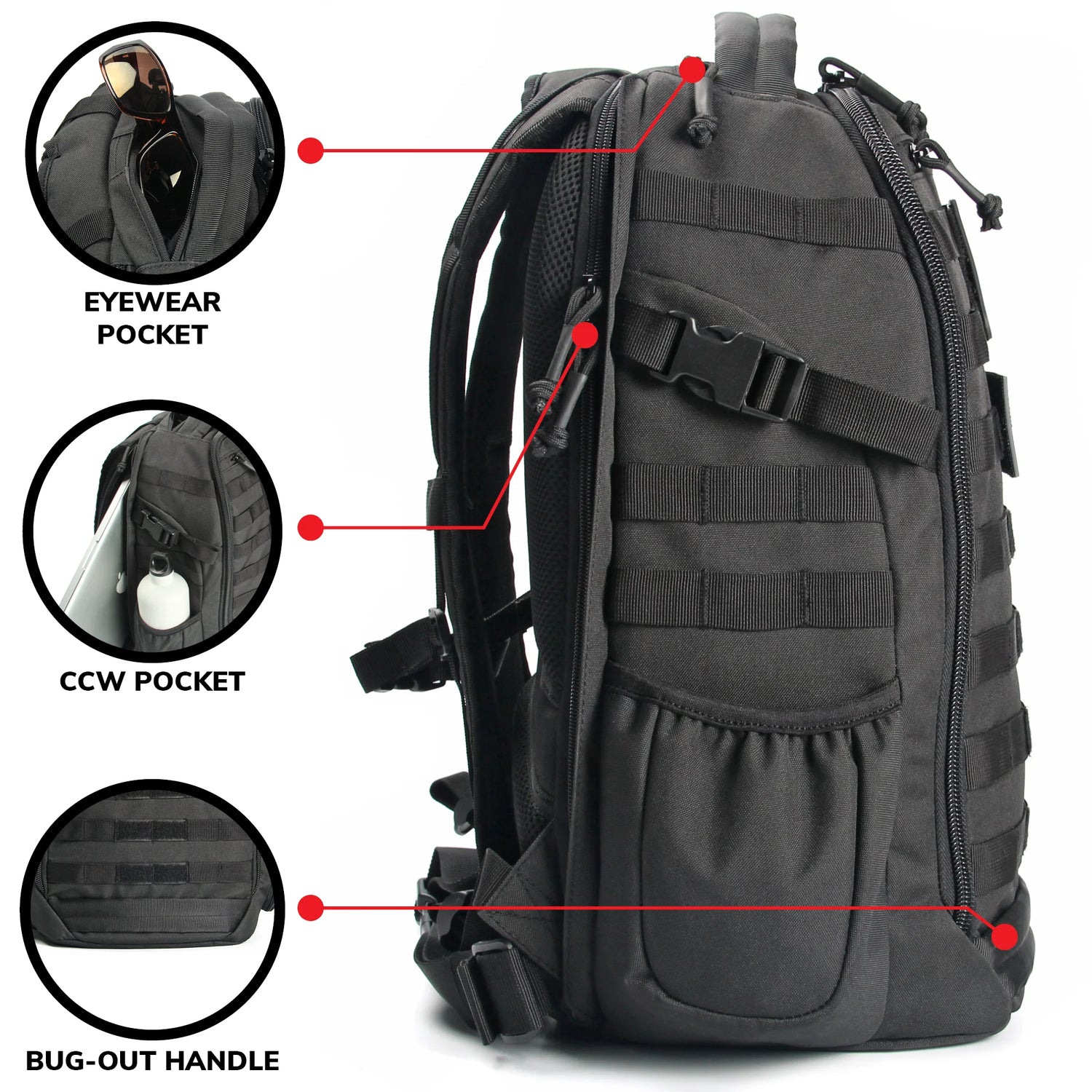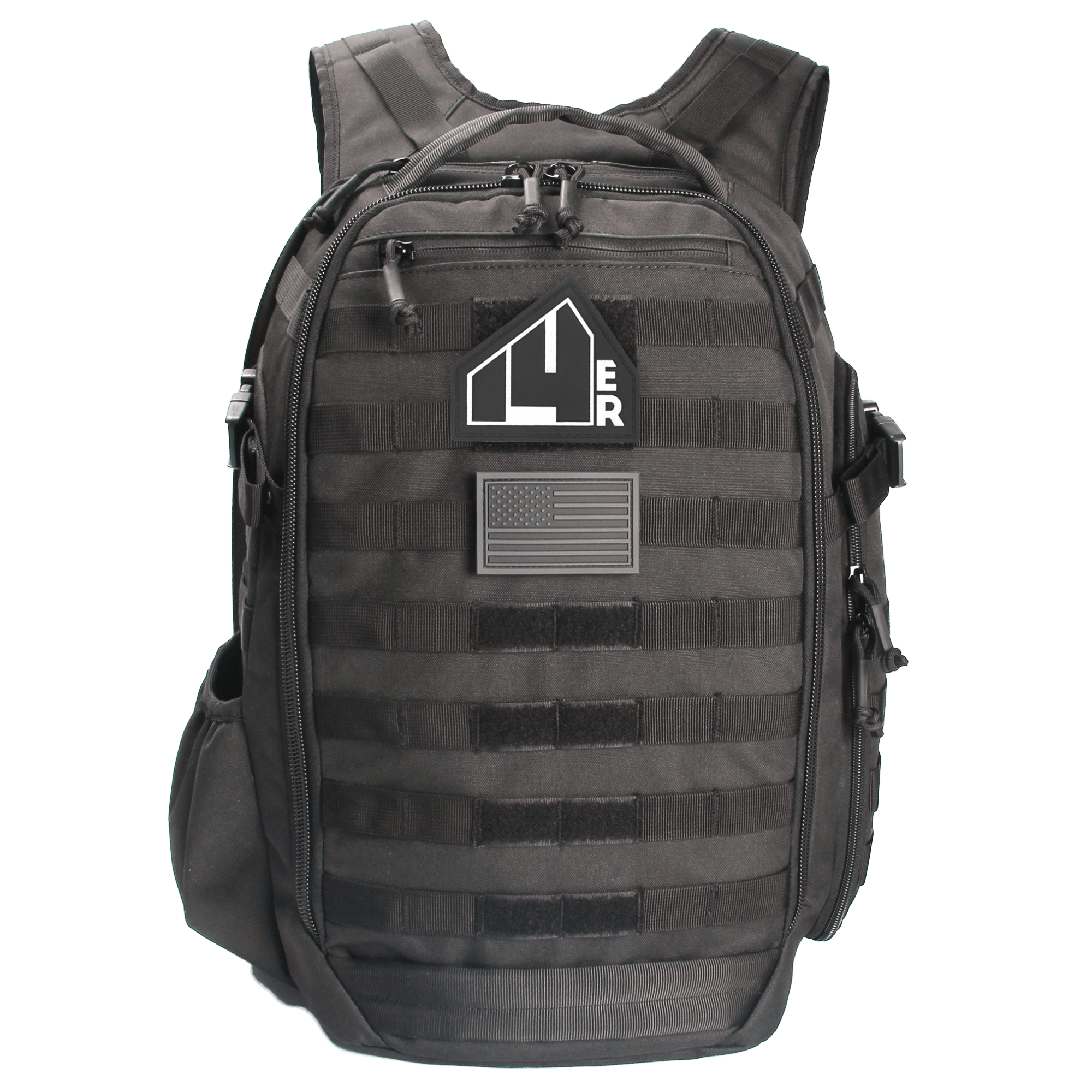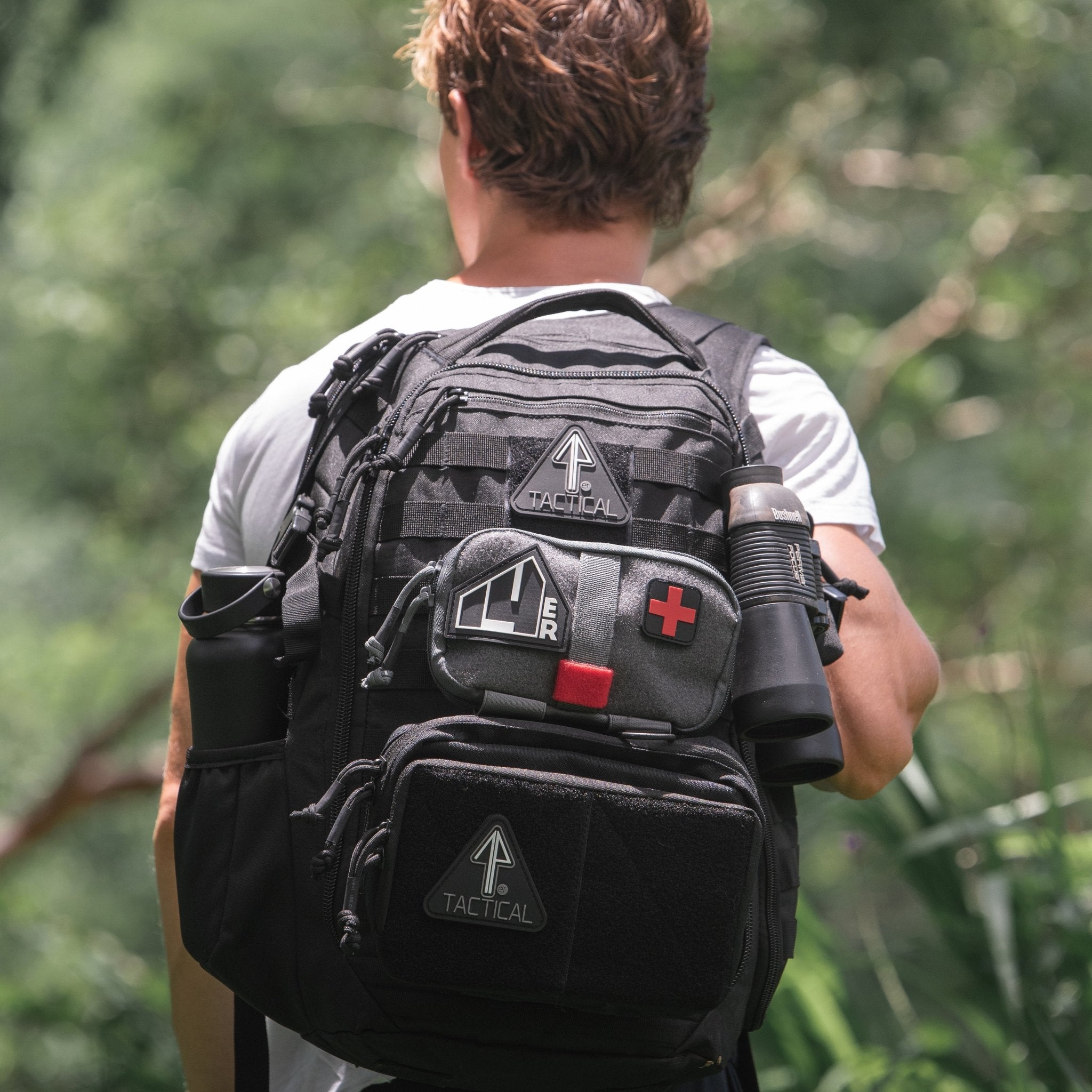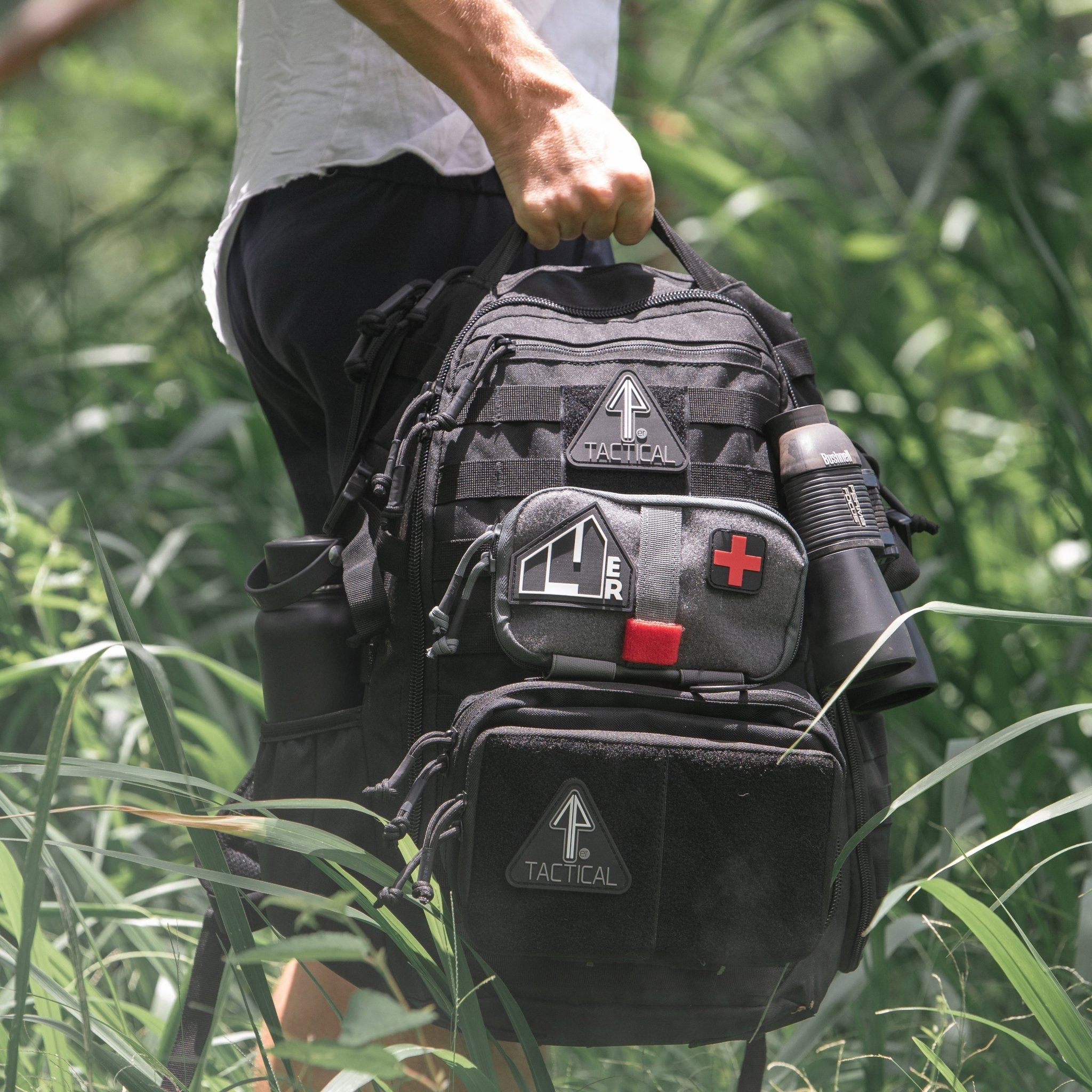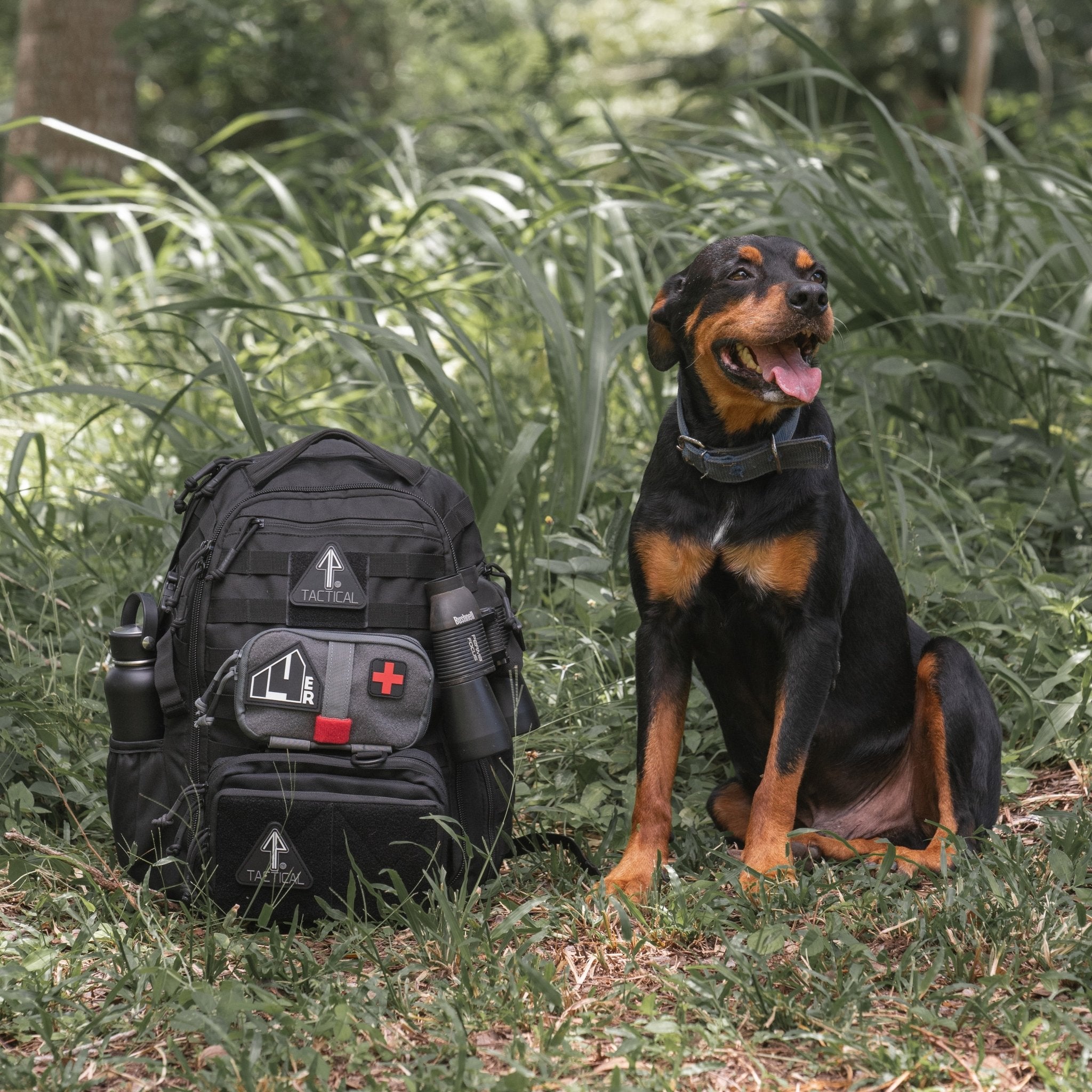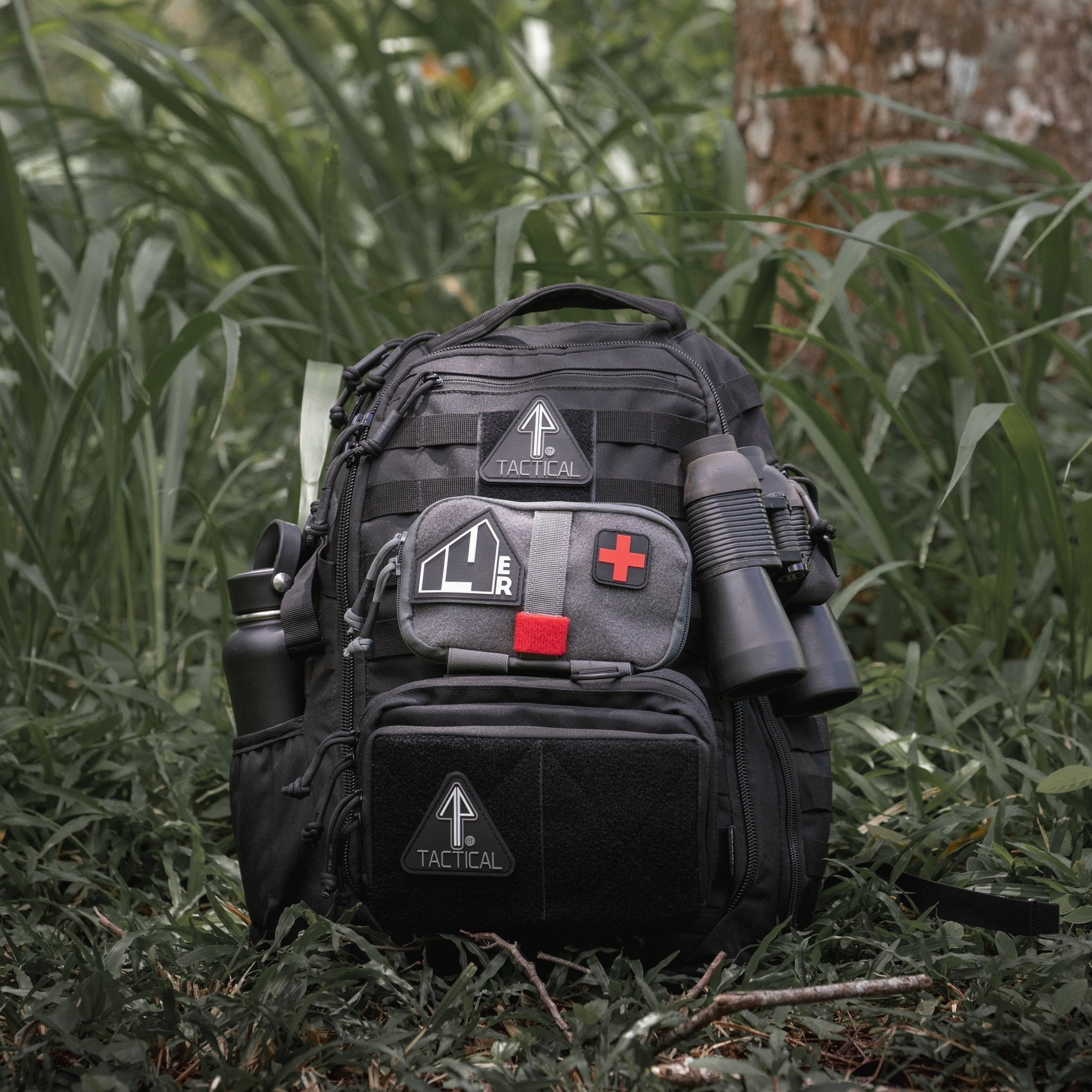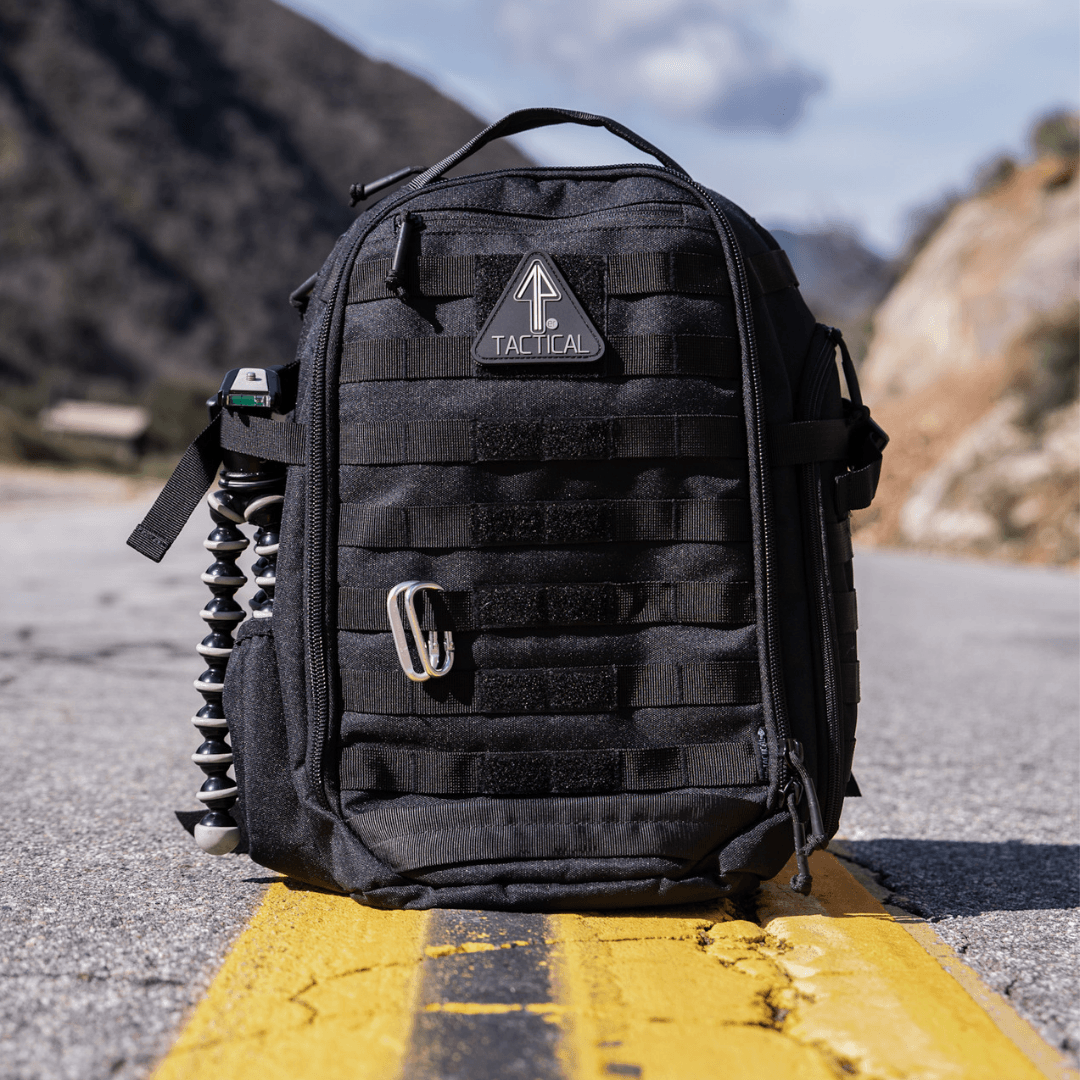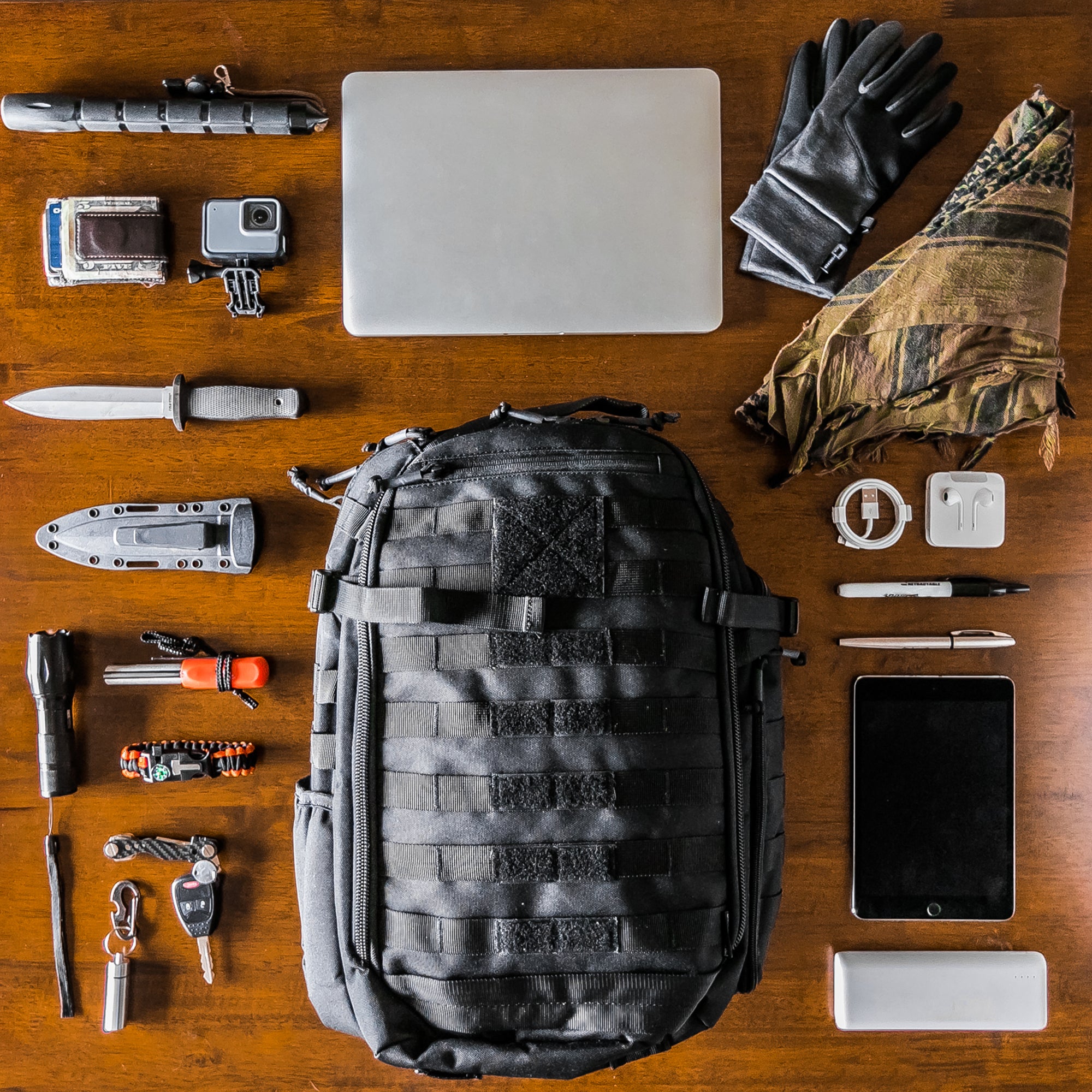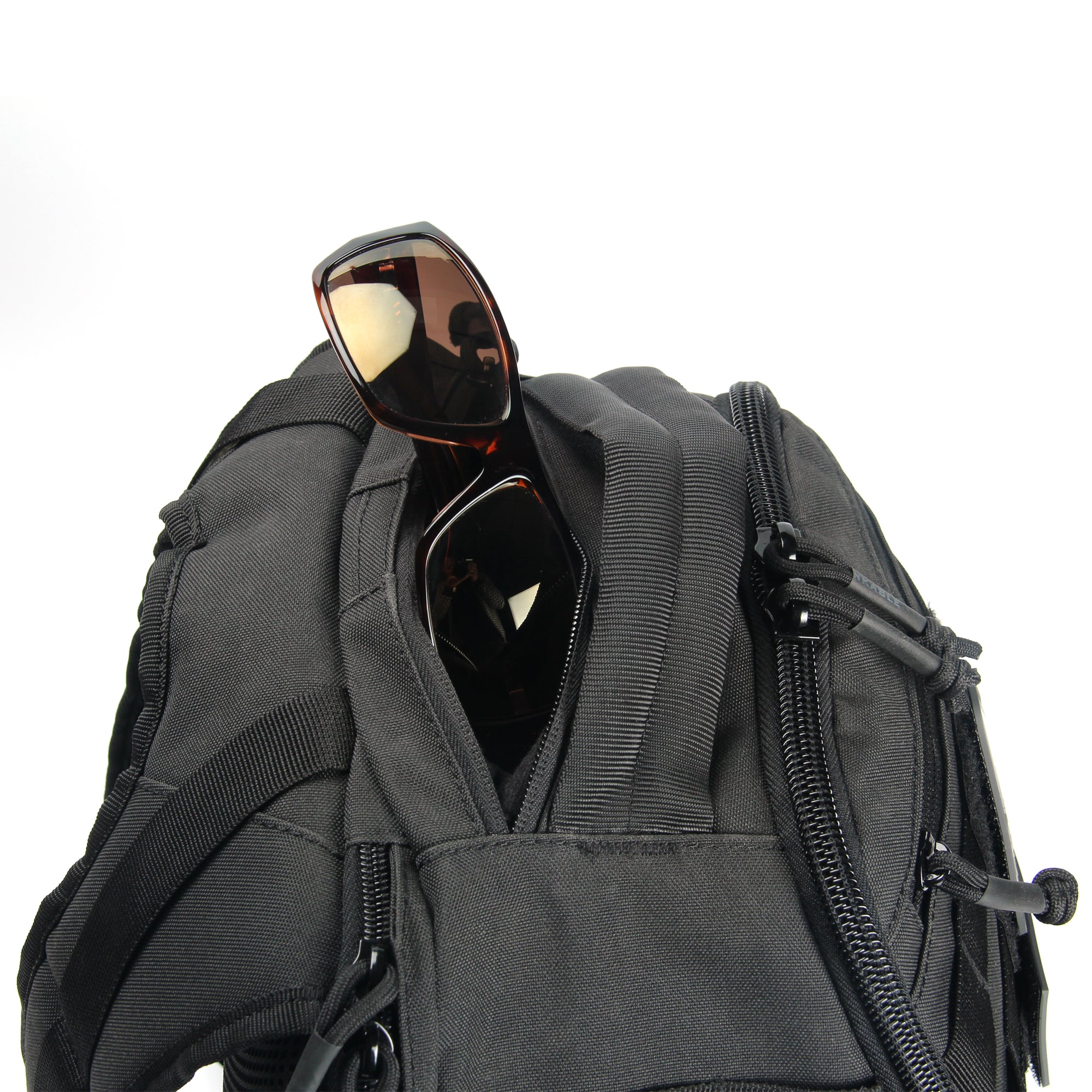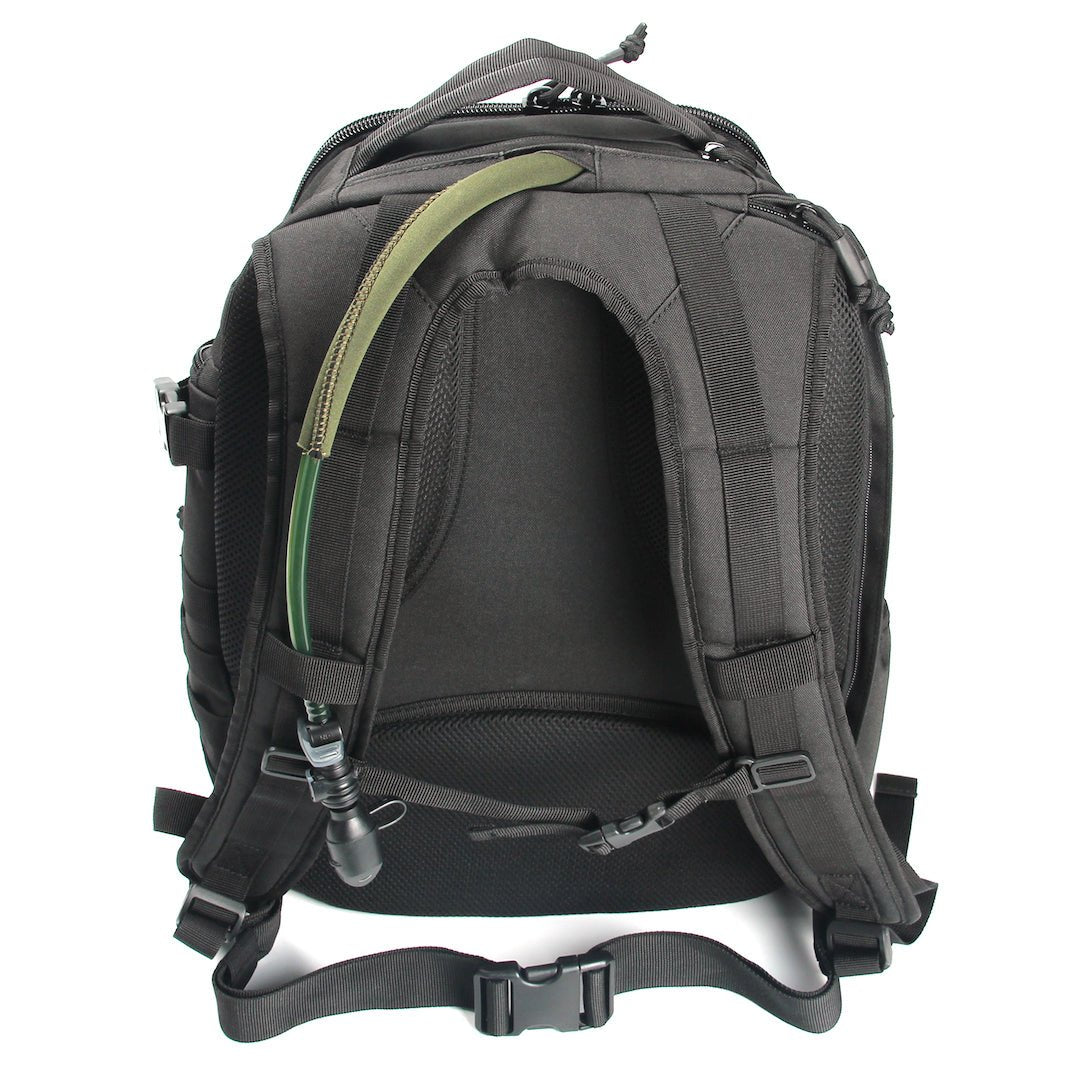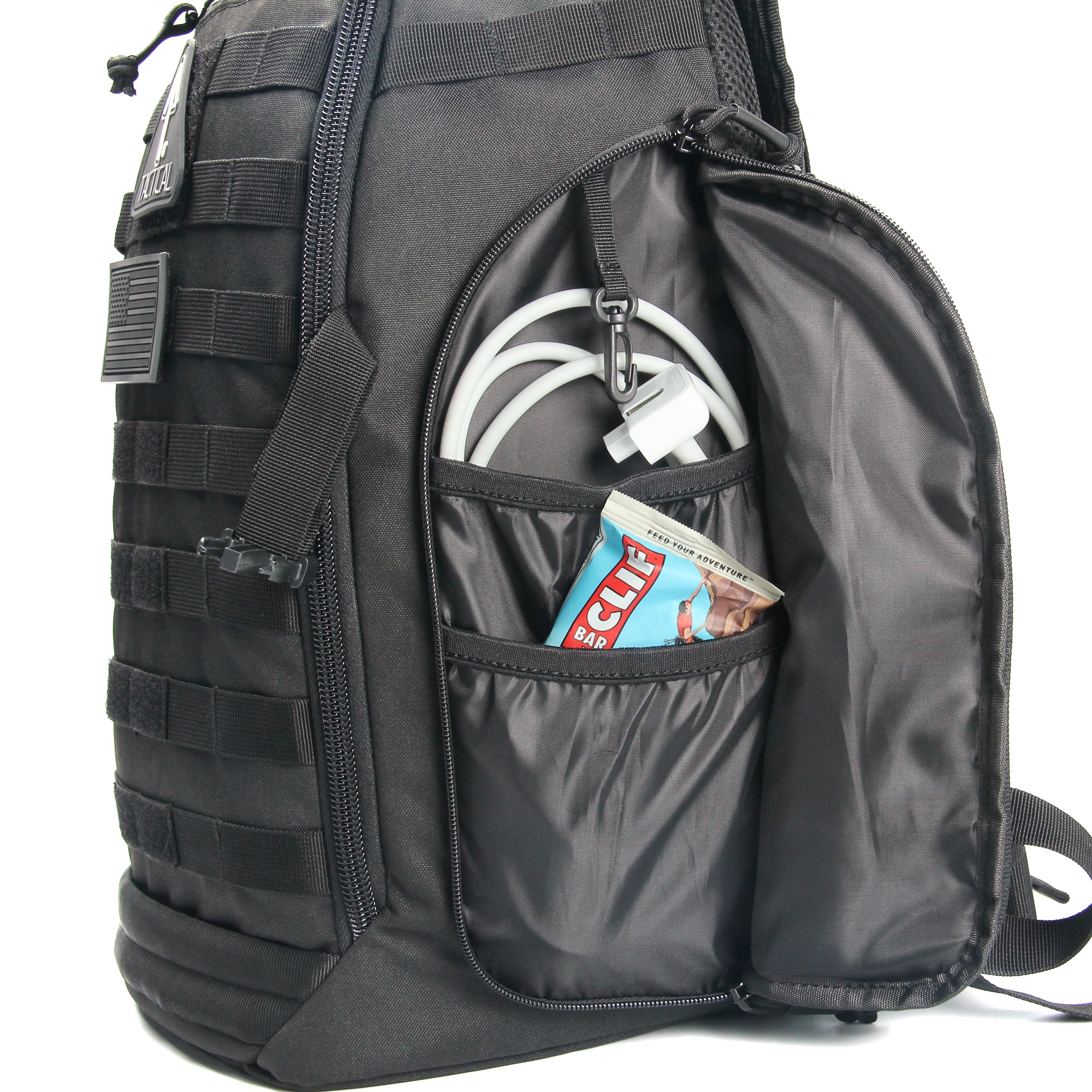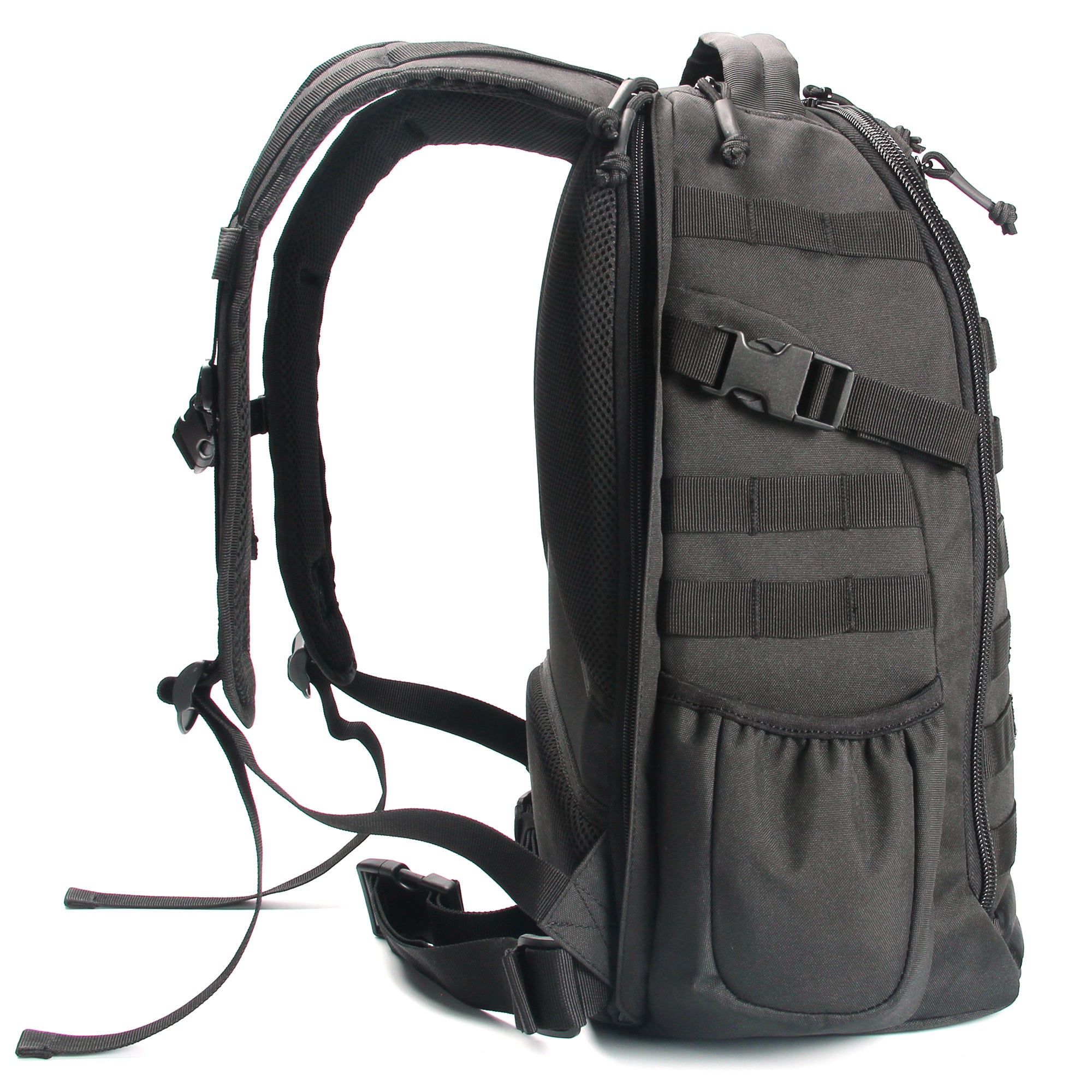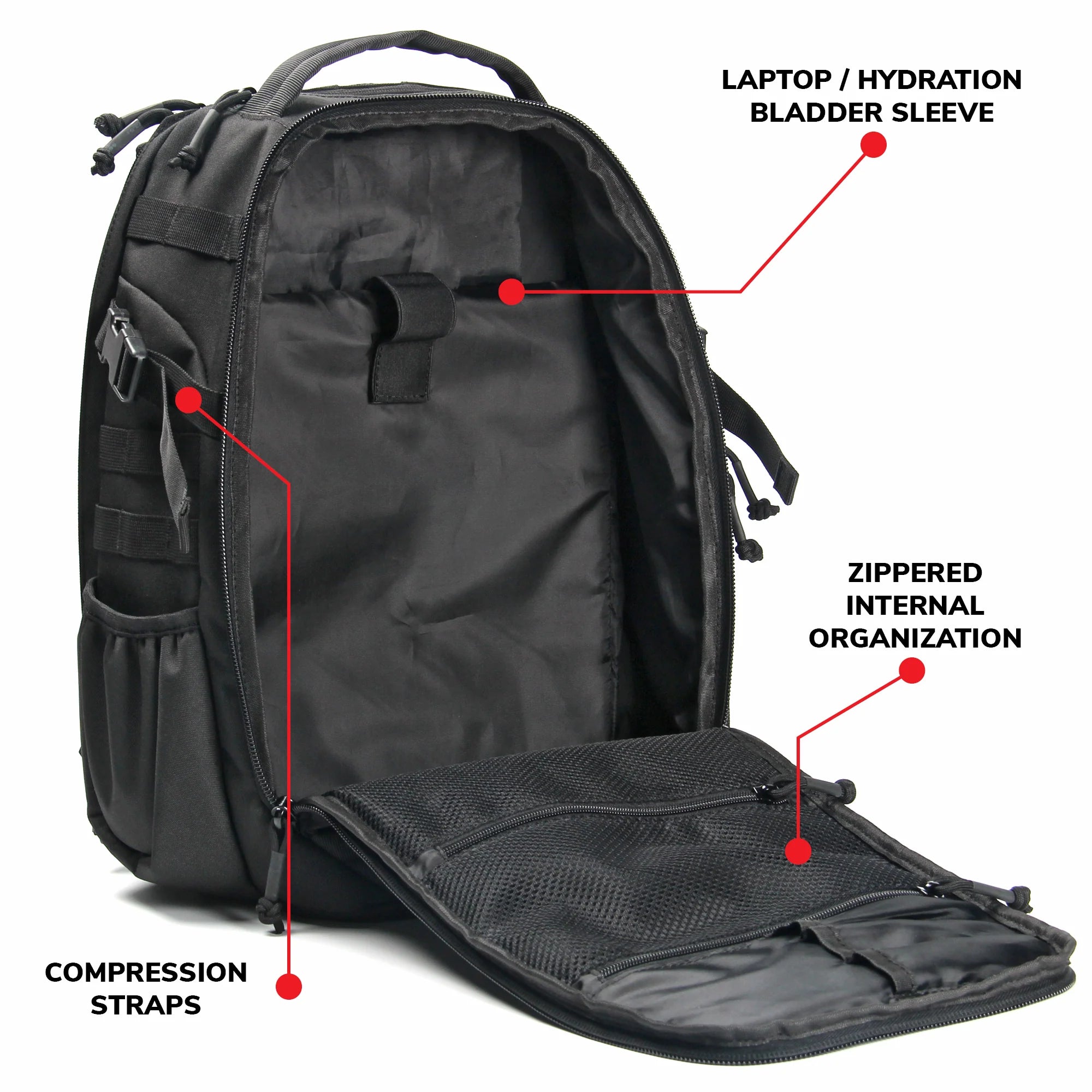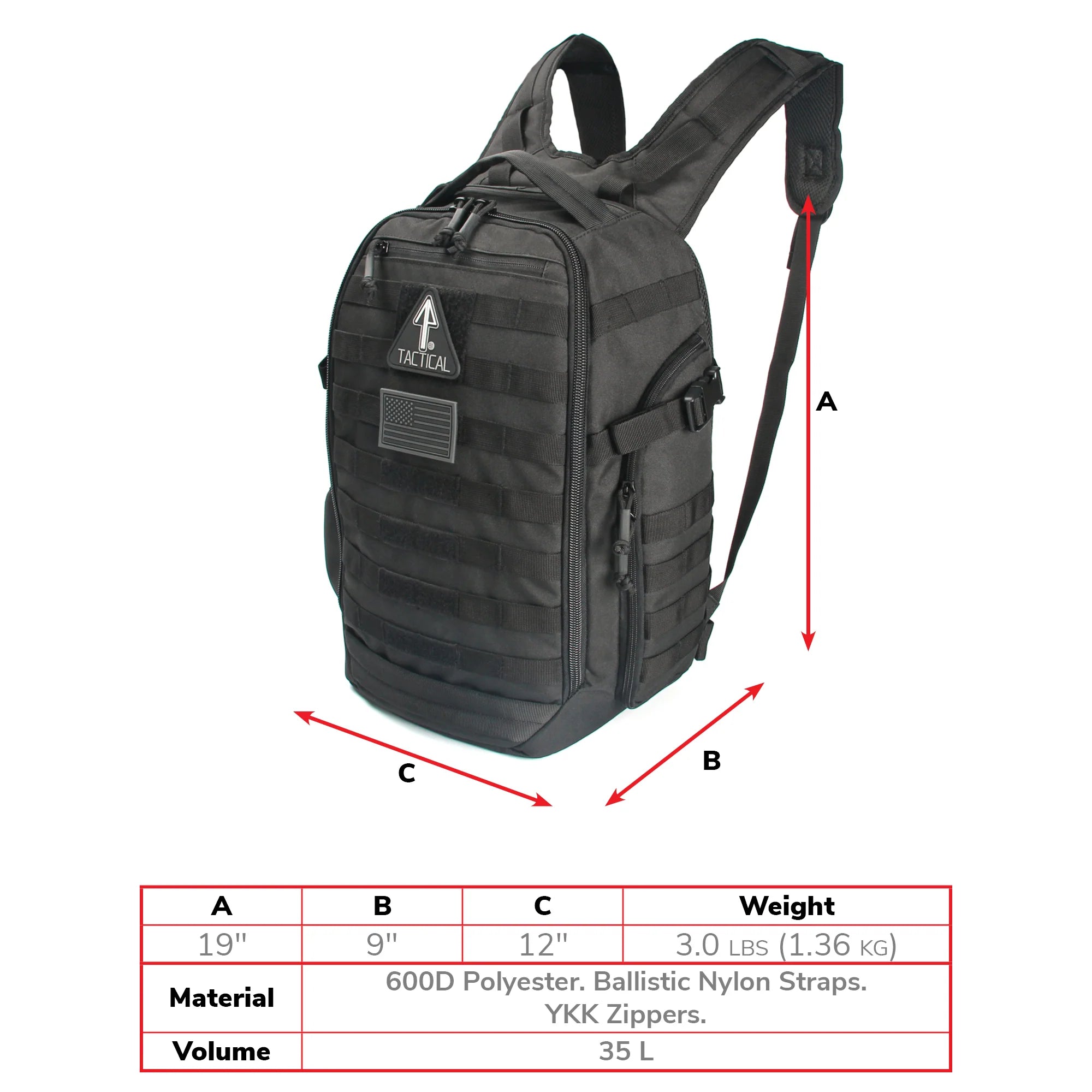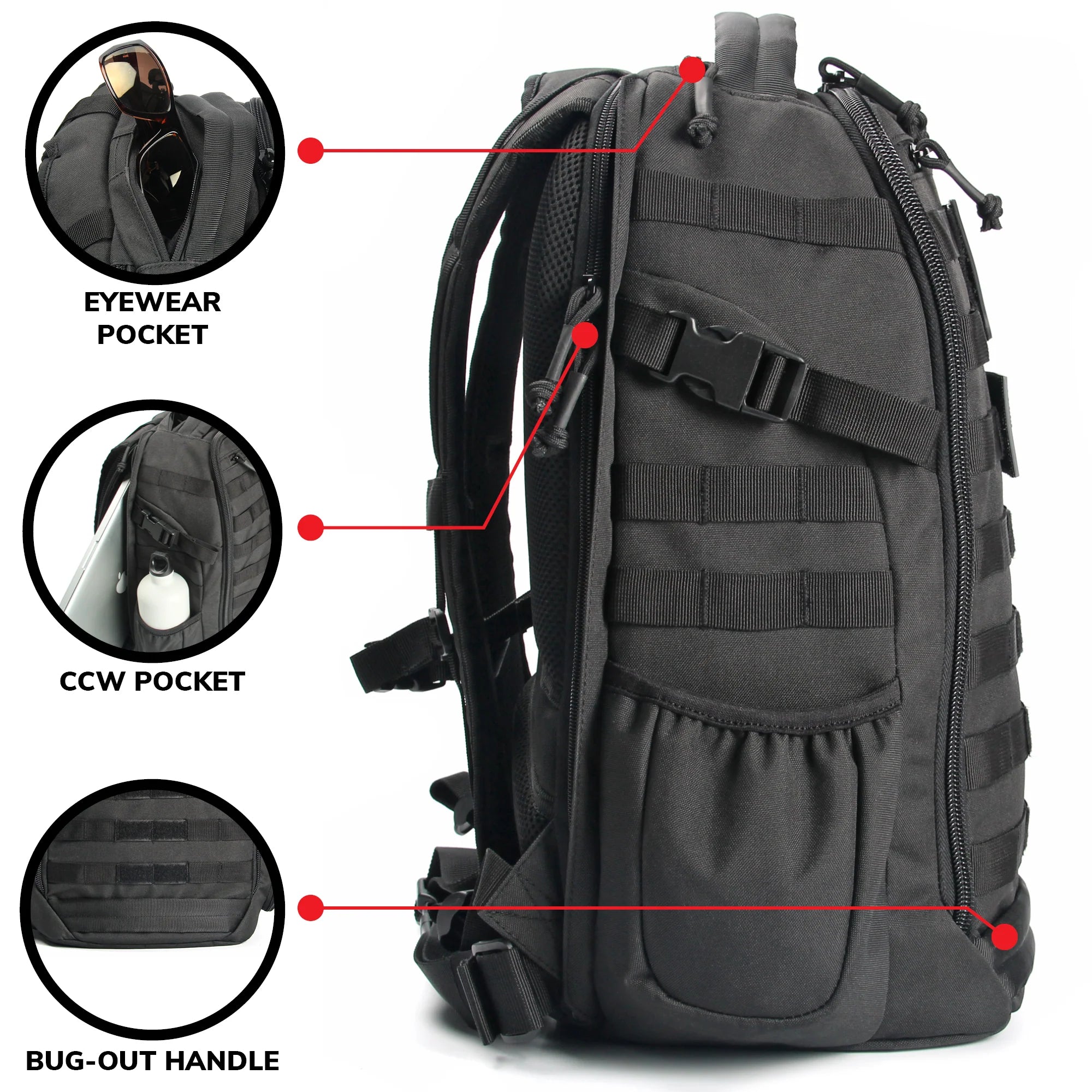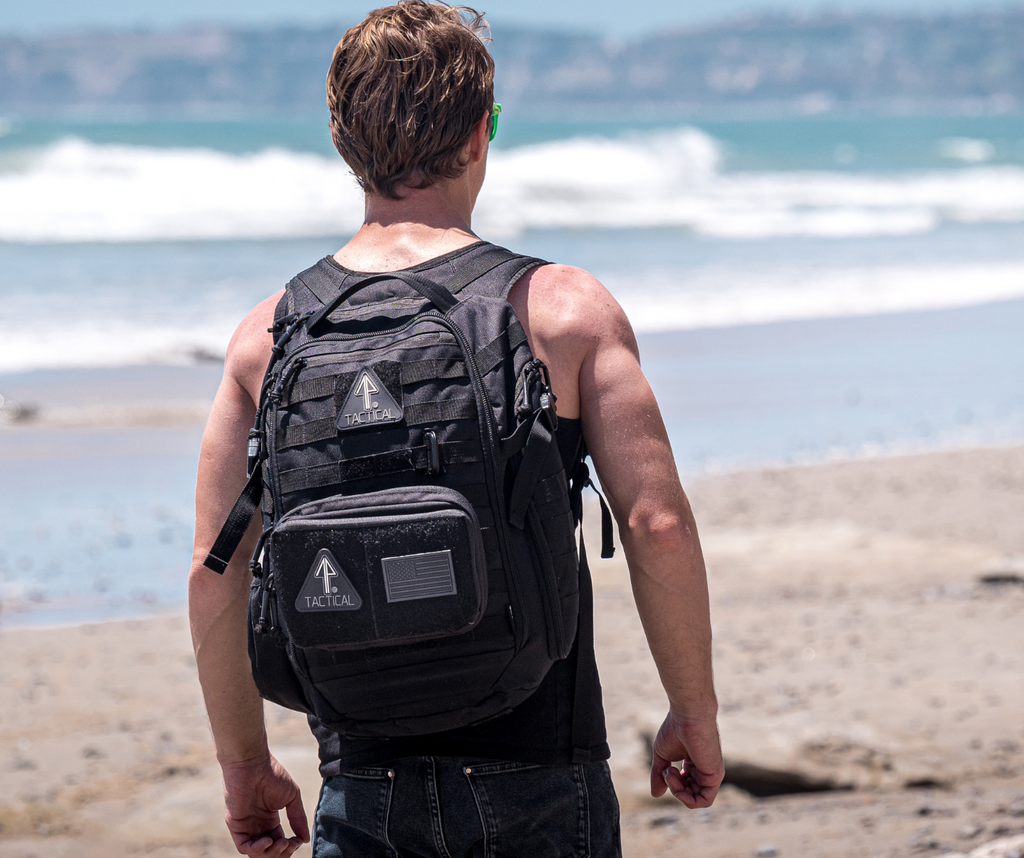
Let’s get real. You can have all the right tactical gear, but unless you’ve got the proper training, you’re not a tactical type. Quality gear is important, but you can’t rely on equipment alone. You’ve got to be fit and responsive!
Physical fitness is essential. Although one can compensate for being slow or out of shape, it’s far better to be physically capable and quick on one’s feet. The majority of tactical training exercises require you to be in shape as well. And we’re not talking baseline fitness here, we’re talking military level fitness.
Tactical Training Exercises: Practicing At-Home Tactical Drills
Before we get to the more intense training techniques, let’s start with some practical drills you can easily do at home. The first one is doing a sweep and clear of the house. This is an exercise you can do at a moderate fitness level, and it offers situational awareness training and development of a tactical mindset.
To clear your home, you should walk around and sweep the area for threats. This is a good thing to practice as you will be highly prepared in case of an emergency situation at home. Clearing the house will work like an instinctive act for you by then.
“Slicing the pie” is an excellent technique to learn for this drill. Here’s how it works: when you enter a room, you’ll walk in small increments along a semi-circle that leads from the doorway to the opposite wall. You are stepping along the crust of an imaginary pie, and the area you need to scan makes up the pie itself. Or at least a slice of the pie. Variations of this method can be applied to clearing stairs and narrow passages. It takes a bit of time to learn the technique, but with some practice, slicing the pie can become second nature to you.
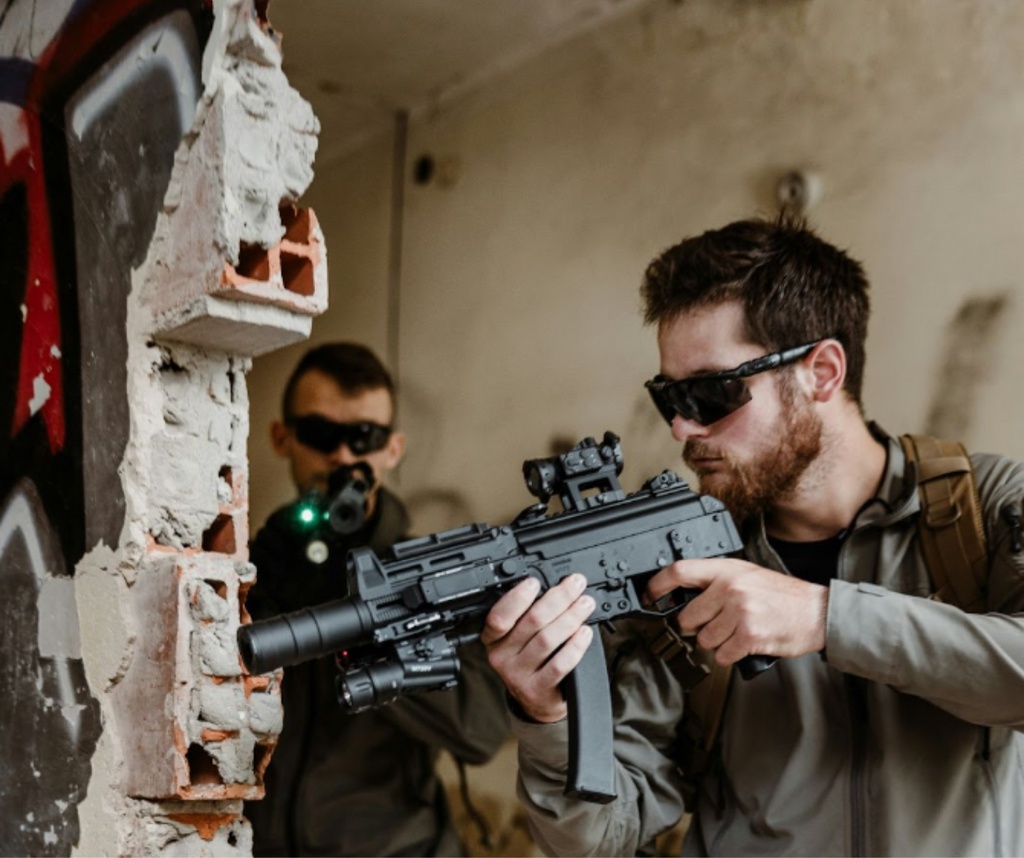
At-Home Tactical Drills for Situational Awareness Training
You can work on your situational awareness at home and while going about your daily business. Situational awareness is what gives you a gut feeling that something is off and you need to get ready to deal with a threat or hazard. Ideally, you’ll get more than a feeling—you’ll be able to identify and locate the problem at hand.
To get to that point, you should familiarize yourself with the OODA Loop. This tactical key was developed by a former US Air Force pilot named Colonel John Boyd. “OODA” stands for Observe, Orient, Decide and Act.
For situational awareness training, you’ll want to focus on the first two steps: Observe and Orient. “Observe” is to look and listen, scanning an area for anything that can prove a threat. “Orient” is a little less intuitive. Basically, it involves tactical assessment. Observation merely collects information. You need to interpret this information by placing it in the proper context. This tells you what observations to focus on and what to filter out. “Orient” pushes you to make a focused assessment within a limited time frame.
To train at home, start by going around the house while taking note of the layout. Keep a good mental snapshot of this. Then with your eyes closed, walk to specific spots around the house. For training outside the house, try this exercise when you are at a location for an extended period. Use your observation skills to determine a “baseline” for that location. That means building a mental model of the location in its normal state. Comparing the current situation with the baseline lets you quickly determine whether you need to adjust your response to what is going on.
For a more advanced application of situational awareness training, learn all about TEWTS or Tactical Exercises without Troops. These are tactical training drills used in the Army to skill up their units in assessing threats and identifying adversary tactics. You probably can’t do these drills at home, but you could look out for tactical training programs that offer such skill courses.
Tactical Skills Improvement: Stealth Movement Techniques
Stealth exists in tactical opposition to situational awareness. While you want to be able to identify and locate a threat, you also want to avoid being detected and assessed. This can prove a tricky balancing act. At times, it is better to appear competent and threatening to avoid trouble. But there are also occasions when blending into the background may be the superior tactic. At some point, you will need to prioritize one approach over the other.
Whatever you do decide, you should still learn stealth movement techniques. Selection of wearable gear plays a part in stealth as well. Certain items of equipment and clothing can easily compromise stealth, so be sure to employ tactical gear that is compatible with silent and furtive movement. Tactical backpacks should fit snugly against your body without impeding mobility. External pouches should be secured firmly and not hanging loose—you can secure pouches better using a pack with a MOLLE system, such as the 14er Tactical Backpack.
That said, you might want to start stealth training without any gear at first. Master the stealth movement techniques, and then acquire the tactical gear training required to move silently while fully equipped. Stealth takes many forms, the main one being quiet movement. This begins with your breathing. Practice controlled breathing exercises until you are able to properly minimize noise.
Then practice the art of slow and deliberate movement. You need to place each step with great care not to disturb the environment. At first this will seem unnatural and painstaking. But over time, you’ll get used to doing it instinctively and will be able to move with relative ease.
Stealth movement techniques can prove very useful if you’re an avid hunter. To up your stealth game as a hunter, you might also want to learn how to make and use a ghillie suit.
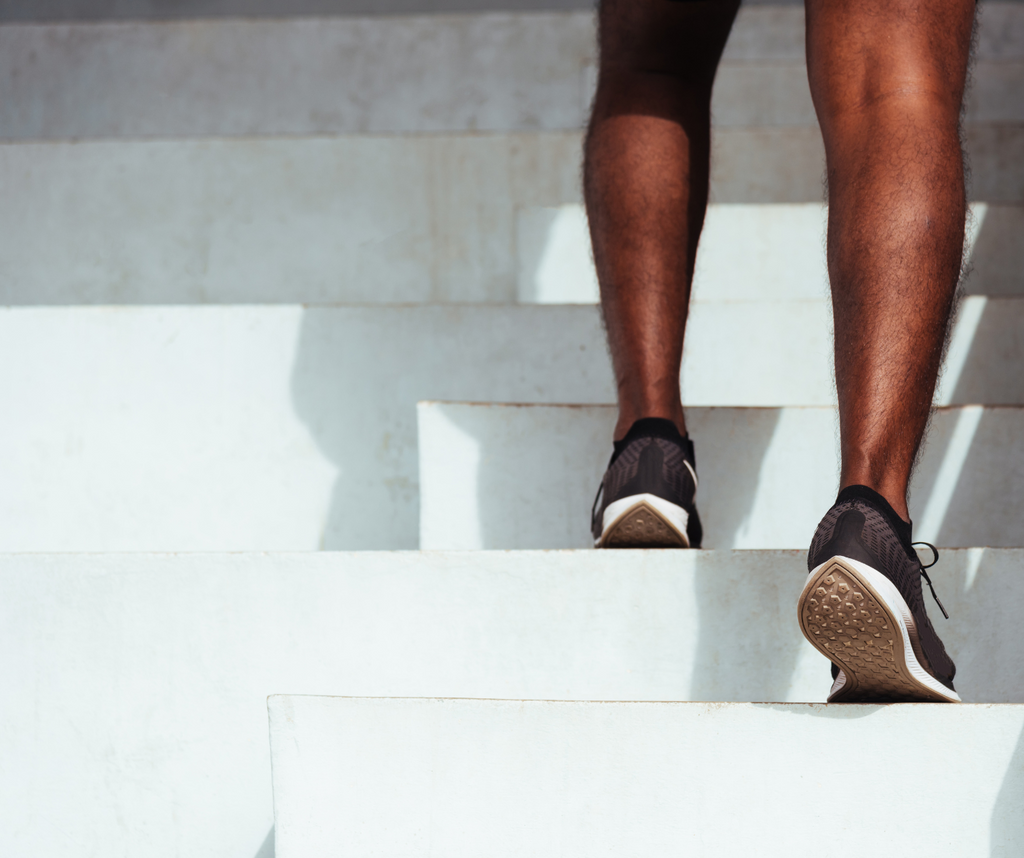
Tactical Skills Improvement: Emergency Response Skills
Your tactical gear training should include knowing how to equip yourself to respond to emergency situations. “Equipping yourself” also goes beyond gear, as you should be equipped with the tactical skills to ensure an effective response. The most essential skill is first aid. The ability to handle a medical emergency can be instrumental in saving a life—possibly your own!
You also want to improve your spatial awareness. At any location you enter, you should have a good idea of how to exit or evacuate in case of a threat or hazard. You’ll need to formulate an escape plan or two, and a keen spatial awareness will serve you well in doing this.
One more thing: learn how to pack a bug out bag to use in the event of a major threat or disaster. You can use tactical gear, such as a quality backpack or range bag, and fill it with essential supplies for survival. Having a bug out bag will help you survive for a week or more outdoors—which should be enough time to get to a safe location.
Tactical Skills Improvement: Emergency Response Skills
Your tactical gear training should include knowing how to equip yourself to respond to emergency situations. “Equipping yourself” also goes beyond gear, as you should be equipped with the tactical skills to ensure an effective response. The most essential skill is first aid. The ability to handle a medical emergency can be instrumental in saving a life—possibly your own!
You also want to improve your spatial awareness. At any location you enter, you should have a good idea of how to exit or evacuate in case of a threat or hazard. You’ll need to formulate an escape plan or two, and a keen spatial awareness will serve you well in doing this.
One more thing: learn how to pack a bug out bag to use in the event of a major threat or disaster. You can use tactical gear, such as a quality backpack or range bag, and fill it with essential supplies for survival. Having a bug out bag will help you survive for a week or more outdoors—which should be enough time to get to a safe location.

Tactical Training Exercises for Strength and Fitness
To be truly prepared, you need to be physically fit. Your fitness training should be balanced around the equal development of strength, endurance, agility and flexibility. Focusing solely on a single attribute (such as strength) is not the best approach.
That said, the stronger you are, the easier it can be to work on all the other physical aspects in training. Strength makes you more capable of performing the majority of tactical training exercises. Military training also places a certain emphasis on the building of strength using push-ups, pull-ups, front squats, planks and deadlifts. Another effective military exercise called rucking is great for improving your endurance and carrying competency.
You’ll want to achieve a respectable level of tactical fitness. Ideally, you should follow a strength training workout program that will deliver satisfactory results after a couple of months. You can also study military special forces training to pick up ideas for your own exercise plan. One good example is the SAS-inspired “Mind Games” workout crafted by Ollie Ollerton of SAS: Who Dares Wins. He designed a brutal three-move fitness challenge that will test your mental resolve when under intense pressure.
Some of the most grueling fitness tests fall under the banner of SERE training. This stands for Survival, Evasion, Resistance, and Escape training. If you have already upped your fitness game and looking for the ultimate challenge, this might be an option. SERE training is actually offered by some commercial tactical training organizations. Be sure to equip yourself with the proper SERE training gear for a better experience.


